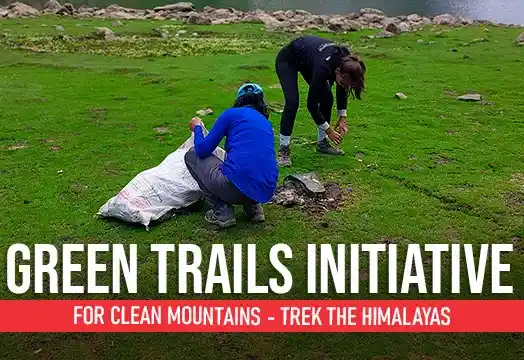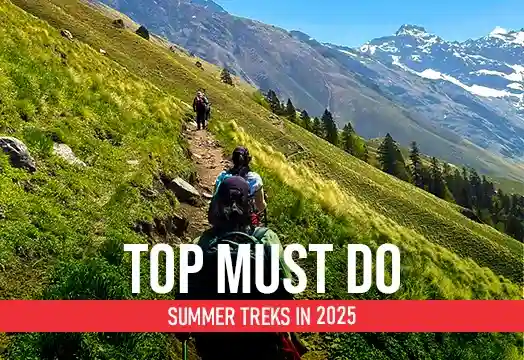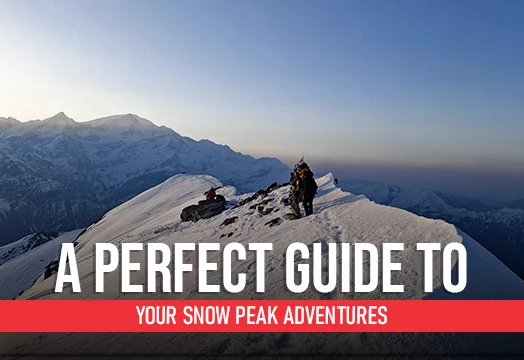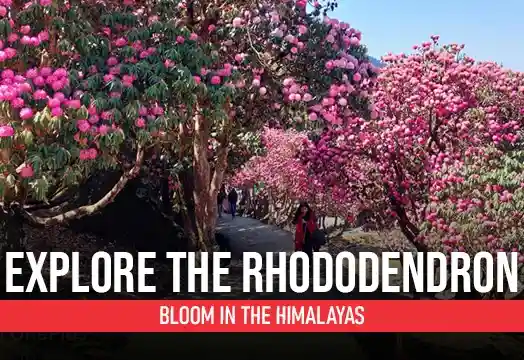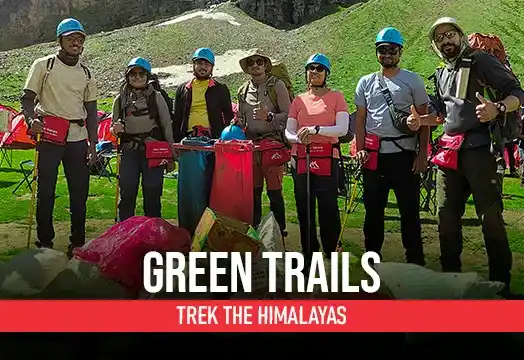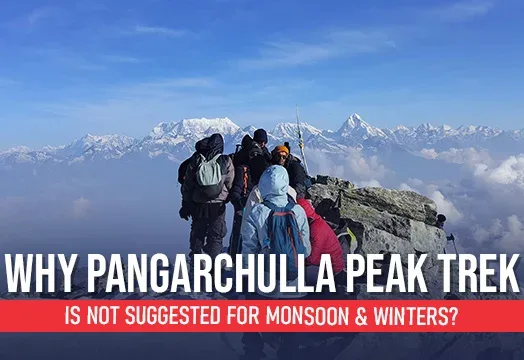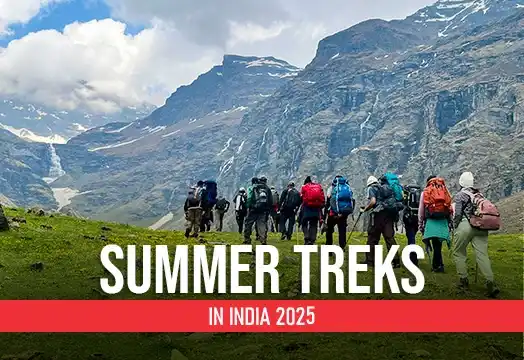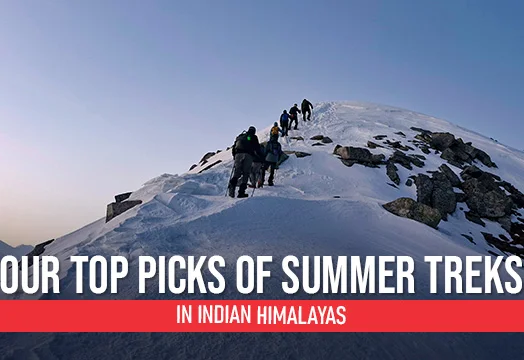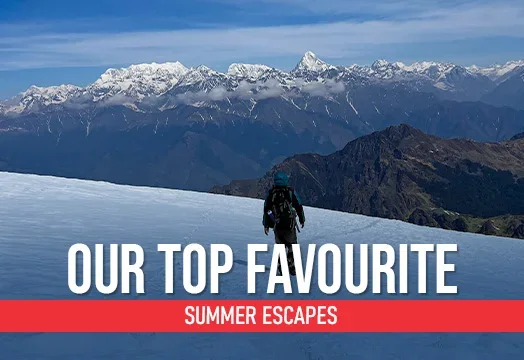Pangarchulla Peak Trek

Region
Uttarakhand | India

Duration
7 Days

Max Altitude
15000 Ft.

Trekking Km
39 KM

Grade
Moderate to Difficult
Get in Touch with Our Trek Expert
91 7302321133 info@trekthehimalayas.comMonday - Saturday: 10 AM to 09.30 PM (GMT +5:30)
Sunday: 10 AM to 05.30 PM (GMT +5:30)
12800 /Person
- March-2026
- April-2026
- 5% GST will be applicable on Trek Cost and Add-ons
- Stargazing with Telescopes
- Services Pipalkoti to Pipalkoti.
- Meeting Point( Pickup/ Drop Point): Back stayz (hotel) Laxman Jhula Near SBI Bank Tapovan, Rishikesh (If transportation is opted from TTH)
- Reporting Time: 6:00 am
- Drop Time: 6:30 pm to 7:30 pm (Timings are subject to change based on weather and road conditions).
- Please reach Rishikesh a day before to avoid any delays.
Add-ons
Insurance 280
- Insurance is mandatory.
- It is available for Indian citizens only.
- Non-Indians have to take insurance on their own.
- If you already have the high altitude trekking insurance, email for a refund after booking.
- The cancellation policy will be implemented in accordance with the trek cancellation policy.
- For more details about insuranceclick here
- + 5% GST will be applicable
Transport 2500
- Transportation Rishikesh to Pipalkoti & return is optional.
- Choose add-ons during booking. If missed, log in and add them later.
- Book transportation at least 10 days before the trek.
- Cancellation 4 or more days before the start of the trip results in a 100% cash refund.
- Cancellation less than 4 days from the start of the trip results in a 50% cash refund.
- Cancellations made on the trip date are not eligible for a refund.
- + 5% GST will be applicable
Offload 2000
- Backpack offload is optional.
- Choose add-ons during booking. If missed, log in and add them later.
- Book offload at least 10 days before the trek.
- For offline bookings at the base camp, a convenience fee of Rs. 2500 applies.
- Cancellations made before the trip date will receive a full refund.
- + 5% GST will be applicable
Single Occupancy Tent 3000
- Single Occupancy Tent is optional.
- Choose add-ons during booking. If missed, log in and add them later.
- Book Single Occupancy Tent at least 10 days before the trek.
- Cancellations made before the trip date will receive a full refund.
- + 5% GST will be applicable
Get in Touch with Our Trek Expert
91 7302321133info@trekthehimalayas.com
Monday - Saturday: 10 AM to 06 PM (GMT +5:30)
Overview
Trek Name: Pangarchulla Peak Trek
Days: 7
Adventure Type: Trekking
Base Camp: Pipalkoti
Season:Spring |
Month:March | April |
Country: India
Altitude: 15000 Ft.
Grade: Moderate to Difficult
Rail Head: Rishikesh
Stay: Camping (Twin sharing) & Hotel/Guesthouse (Separate for male & Female)
Food: Meals while on trek & at Hotel/Guesthouse (Veg & Eggs)
Location: Uttarakhand
Distance: 39 Km.
Trail Type: Summit, Point to point | Scale a peak, Camping at the same location upon returning.
AirPort: Jolly Grant Airport, which is 21 km away from Rishikesh
Highlights:
- 5% GST will be applicable on Trek Cost and Add-ons
- Stargazing with Telescopes
- Services Pipalkoti to Pipalkoti.
- Meeting Point( Pickup/ Drop Point): Back stayz (hotel) Laxman Jhula Near SBI Bank Tapovan, Rishikesh (If transportation is opted from TTH)
- Reporting Time: 6:00 am
- Drop Time: 6:30 pm to 7:30 pm (Timings are subject to change based on weather and road conditions).
- Please reach Rishikesh a day before to avoid any delays.
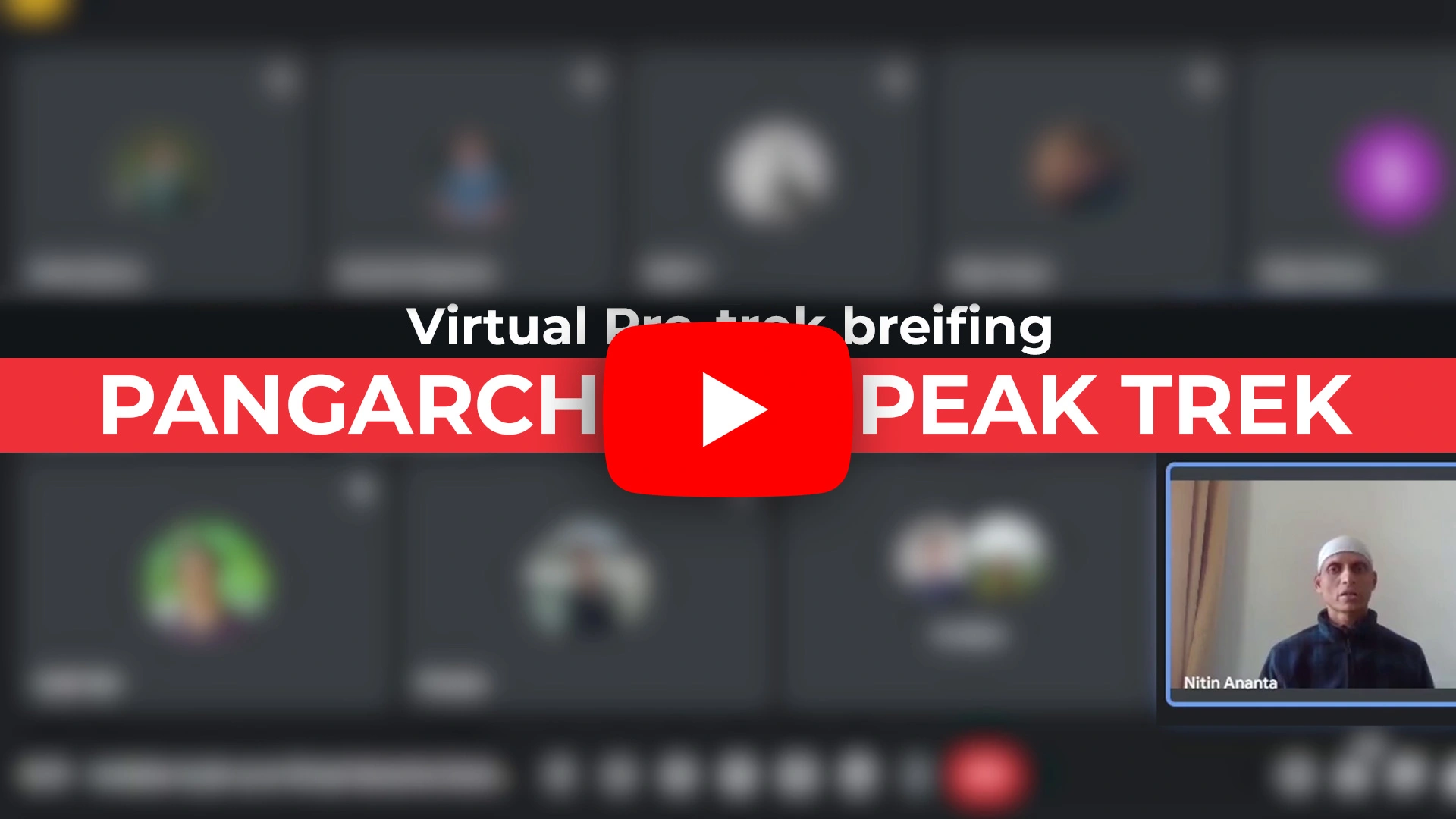
Why is Pangarchulla Trek a Must-Do Trek ?
- The Pangarchulla Trek combines mesmerizing landscapes with an adventurous climb, offering you a perfect balance of both serenity and thrill.
- Embrace the beauty of the Kuari Pass, which is fondly called the “Doorway to Heaven,” because of its beauty that takes you close to the vast Himalayan mountains.
- Taking you through oak and rhododendron forests to high-altitude meadows, the Pangarchulla trek is rich in biodiversity. You may even spot musk deer, or vibrant bird species, adding to the charm of your journey.
- The trek takes you through expansive bugyals that seem to stretch endlessly. These lush green carpets, framed by towering peaks, are picture-perfect and provide peaceful resting spots.
- As you walk through villages, cross streams, and climb rocky trails you get to witness the raw beauty and culture of the Himalayas, it is a journey that connects you deeply with nature.
- The climb to Pangarchulla Peak is both challenging and fulfilling. The steep ascents, ridges, and snow-covered paths test your endurance, but the views are worth it all.
.webp)
Who Can Participate
- Age Requirement:
- Minimum 14 years
- First-timers are welcome, though prior trekking experience is preferred. Good fitness is a must.
- Fitness Criteria:
- If the trekker wants to carry a backpack then he/she should be able to carry a 10-12 kg backpack. If opt Off-load option then the trekker should be able to carry 3-5 kg backpack.
- If a trekker's BMI is more or less than the normal range (18-27), please consult our Trek Coordinator before booking.
Loved it? Do it again for free!!!
At Trek The Himalayas, we understand that things don’t always go as planned. If you couldn’t complete your trek or just want to experience it once more, we’re giving you a wonderful opportunity – the chance to do the trek again without having to pay the trek fee again.
Pay a one-time fee to select your favourite trek, and you can repeat it as many times as you want within 5 years.

Terms and Conditions:
- The offer is valid for 5 years from the trek departure date.
- Participants are not required to pay the trek cost again, but they will need to cover transportation, insurance, and trek permit costs.
- This offer is non-transferable and is only applicable to TTH's limited fixed departures.
- The offer does not apply if the participant has received a refund, a voucher, or a transfer to another trek that has been used previously.
- The offer will be activated once the participant reaches the trek base camp.
- This is not an offer linked to any purchased package; rather, it is an initiative extended by TTH out of goodwill, without any cost to the trekkers.
- Trek The Himalayas reserves the right to cancel this offer at any time, in case of:
- Disobeying the safety regulations, trekking rules, or the code of conduct
- Black listing due to bad behavior, payment issues, or providing inaccurate information
- Anything that would damage the brand or reputation of TTH
- In order to rebook, just fill in our booking form online or call our team.
Pangarchulla Peak Trek Itinerary
Rishikesh to Pipalkoti
- Altitude: 1,350m / 4,400ft
- Drive Distance: 220 km | 9-10 hours
- Accommodation: Guest House
- Network: Available
Your journey begins from Rishikesh, a city known for its spiritual aura and adventure activities. Trekkers will be picked up from Rishikesh. Those who wish to explore more, Rishikesh itself is a hub for cultural experiences and adrenaline-pumping water sports. You might want to extend your stay for a day or two to indulge in activities like river rafting or visiting sacred sites like the Triveni Ghat, known for its enchanting evening aarti.
The road trip starts along the pleasing Badrinath Road. The journey is long, but filled with captivating landscapes and cultural landmarks, making the 9-10 hour drive to Pipalkoti an enriching experience. You will also notice how the Alaknanda River character transforms, starting as a serene flow but becoming increasingly wild and powerful as we climb higher into the Himalayas. The sights are truly spellbinding, with the river carving through the valley and towering peaks lining the horizon.
You will also pass by the four Prayags, holy confluences of the Ganga’s tributaries. These include Devprayag, where the Alaknanda meets the Bhagirathi to form the Ganga; Rudraprayag, where the Mandakini joins; Karnaprayag, where the Pindar River merges; Nandaprayag with the Nandakini. All these four sacred confluences that are not only picturesque but also hold deep spiritual significance in Hindu mythology.
While the journey may be long, the constantly changing views of rivers, mountains, and valleys will keep you engaged. Be ready to capture these scenic moments, as they are some of the most beautiful sights you’ll see before reaching your destination. You will arrive at Pipalkoti late evening, where you will be welcomed with tea, followed by a trek briefing and dinner. Accommodation will be arranged at a guest house, and if you need to connect with family or friends, telephone networks are available in the area.
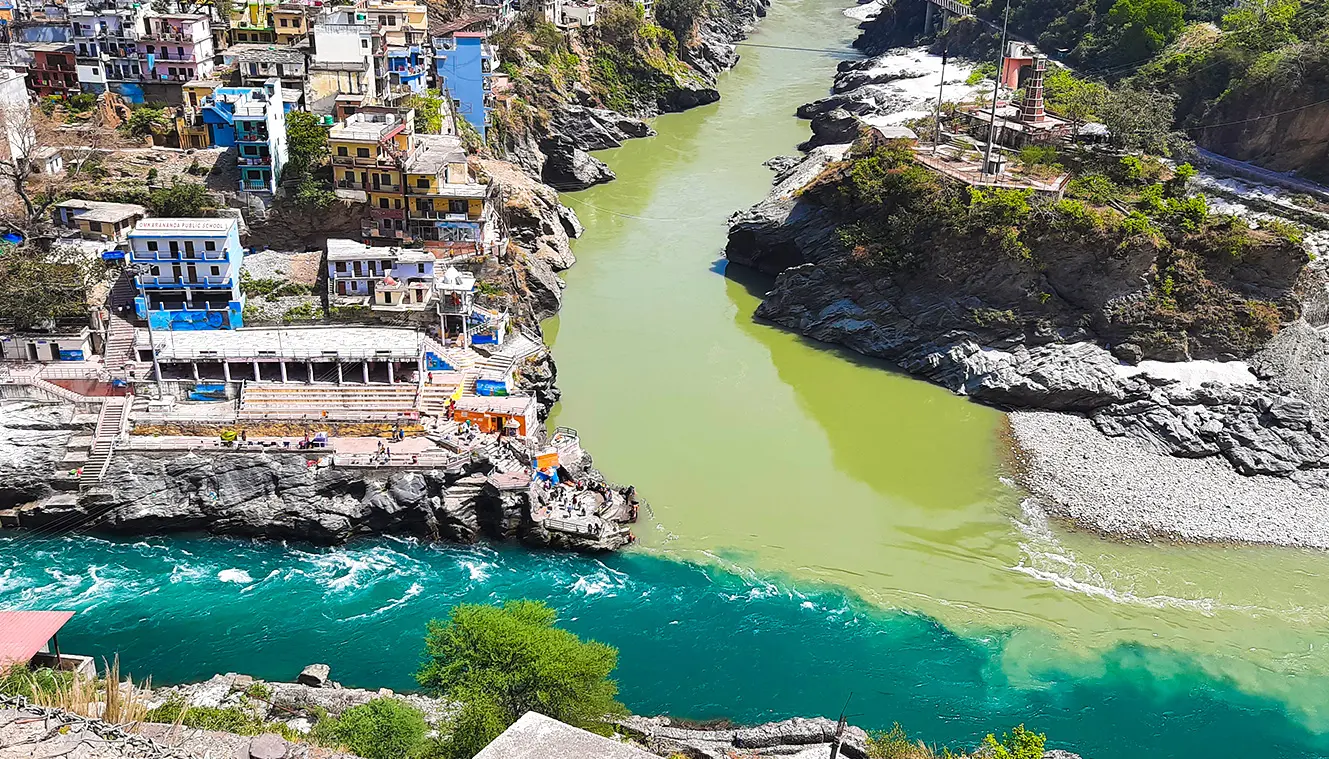
Drive from Pipalkoti To Tugashi village And Trek To Gulling Top
- Altitude:
- Tugashi village: 2450m / 8000 ft.
- Gulling Top: 2,850 m / 9,400 ft.
- Drive Distance (Pipalkoti-Tugasi): 50 km | 2-3 hrs.
- Trek Distance: 3km | 2-3 hrs.
- Accommodation: Tent
After an early breakfast at Pipalkoti, the journey begins with a picturesque 2-3 hour drive to Tugasi village, situated at 2,450m. The rocky and winding roads provide great views of the Garhwal landscape, setting the stage for the adventure ahead. Tugasi is the starting point of your trek, and from here, the trail provides a mix of steep and gradual ascents, mostly cutting through charming mountain villages.
The initial part of the trek takes you through agricultural lands with terraced farms, a typical feature of the region. While greenery may not be abundant, the panoramic views of the Garhwal frontier more than compensate. As you climb, look out for the Dhauli-Ganga River glistening far below and the Vishnugad-Tapovan Hydroelectric Power Station in the distance.
The ascent becomes steeper as you leave behind the terraced farms and move higher up the trail. Soon, you’ll encounter the stunning sight of Dronagiri peak, which appears hauntingly beautiful in the distance, creating an almost magical feeling. The rugged terrain transforms into an open meadow as we arrive at Gulling Top, where we will set up camp for the night.
The Gulling campsite shows the surrounding peaks, with Dronagiri, Hathi Parvat, and Gauri Parbat, Barmal Peak dominating the horizon. The evening is nothing short of magical, with the sun casting a golden hue over the landscape as it sets behind the mountains. The serenity of the oak forests around the meadow adds to the charm of this place.
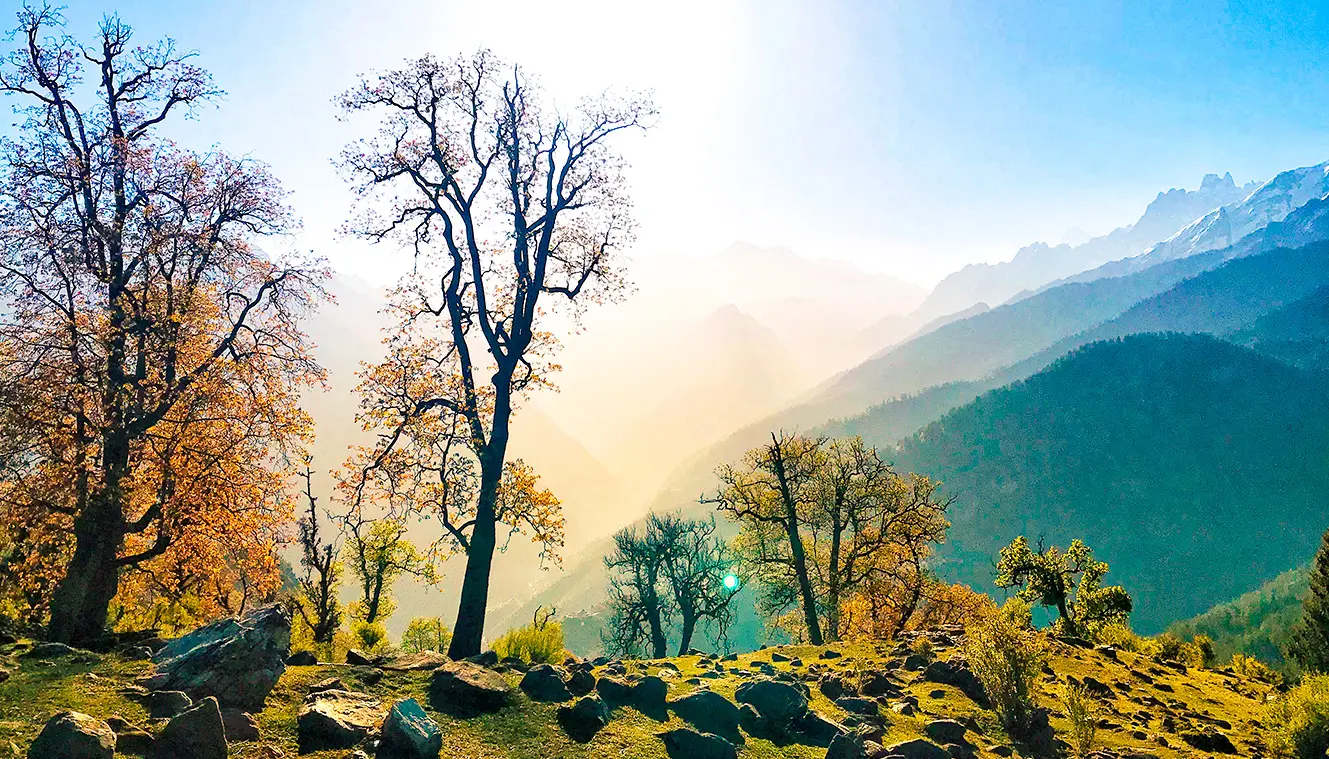
Trek from Gulling Top to Khullara
- Altitude (Khullara): 3,350m / 11,000ft
- Trek Distance: 5-6 km | 4-5 hrs
- Accommodation: Tent
Your trek today is a moderate ascent that takes you through an enchanting trail lined with oak, rhododendron, and walnut trees. After breakfast, you'll leave Gulling Top, walking a muddy route sheltered under a dense forest canopy. Although big mountain views are limited along this stretch, the vibrant flora and occasional snow patches make it equally mesmerizing.
While you hike, you'll encounter numerous water points and traverse sharp curves with deep ravines on one side. The rhododendron blooms into pink and red, brightens the way, while the rich greenery of Silver Birch and Spruce adds to the trek’s charm. Snow begins to dot the landscape as you near Khullara, signaling the approach of Pangarchulla's famed winter trails.
By midday, you'll reach the Khullara campsite, a serene clearing surrounded by coniferous forests of blue pine, oak, and rhododendrons. Lunch is served upon arrival, and it feels especially rewarding after the morning’s effort.
Spend the afternoon on an acclimatization walk to the Khullara meadows, about 40 minutes away. This short trek rewards you with an awe-inspiring panorama of Kamet, Mana Parvat, Deoban, Hathi Parvat, Garud, Trishul, and Dronagiri peaks. The Khullara Top, part of the legendary Lord Curzon’s Trail, shows 360-degree views of the surrounding Himalayan giants.
After soaking in the vistas, return to the campsite before sundown. The evening is reserved for relaxation, letting your body adjust to the altitude. Enjoy the serene surroundings, share stories around the campfire, and rest well in your tents. Proper rest is essential as the adventure ahead promises even more challenges and breathtaking rewards.
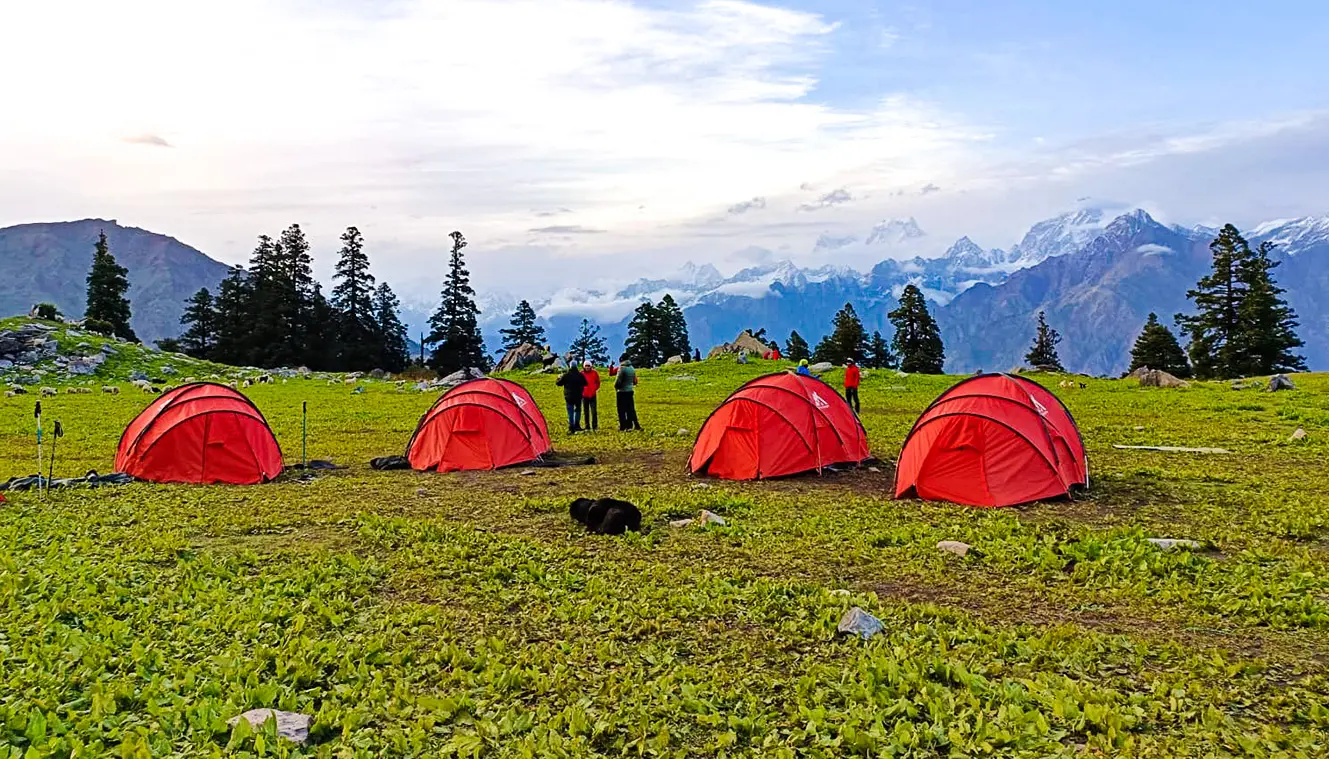
Trek from Khullara to Kuari Pass via Khullara Top and Back to Khullara
- Altitude (Kuari Pass): 3,800 m / 12,500 ft
- Trek Distance: 3-4 km (each way) | 5-6 hrs
- Accommodation: Tent
This day is a significant highlight of your trek, as you embark on an exhilarating journey to the famed Kuari Pass via Khullara Top. Known for its jaw-dropping views of the Garhwal Himalayas.
The trek begins early in the morning, with the cool mountain air invigorating your spirit. The trail from Khullara winds through alpine meadows, gradually ascending towards Khullara Top. The path is steep in sections, testing your endurance, but the unfolding views of majestic peaks like Dronagiri, and Hathi Parvat, Gauri Parbat Neelkanth, Chaukamba, etc keep you motivated.
Reaching Khullara Top, you are treated to a sweeping vista of the Himalayan landscape. From Khullara Top, three trails diverge: one leads back to Tali, another heads uphill towards Pangarchulla, and the third towards Kuari Pass. After a short break to soak in the beauty and catch your breath, you continue the trek to Kuari Pass. The trail here is a mix of gradual inclines and narrow ridges, with the grandeur of the mountains surrounding you.
Upon reaching Kuari Pass, you’ll understand why it’s often called the “Doorway to Heaven.” The 360-degree views of the snow-covered peaks are simply mesmerizing. The pass holds historical significance as well, having been traversed by legendary explorers like Lord Curzon, whose footsteps you now follow.
After spending some time at the pass, capturing photos, and reveling in the moment, you retrace your steps back to Khullara. The descent is easier and allows you to revisit the scenic stretches with a renewed perspective.
Once back at the campsite, the remainder of the day is for rest and an acclimatization walk around the area. This helps prepare your body for the high-altitude ascent to Pangarchulla Peak.
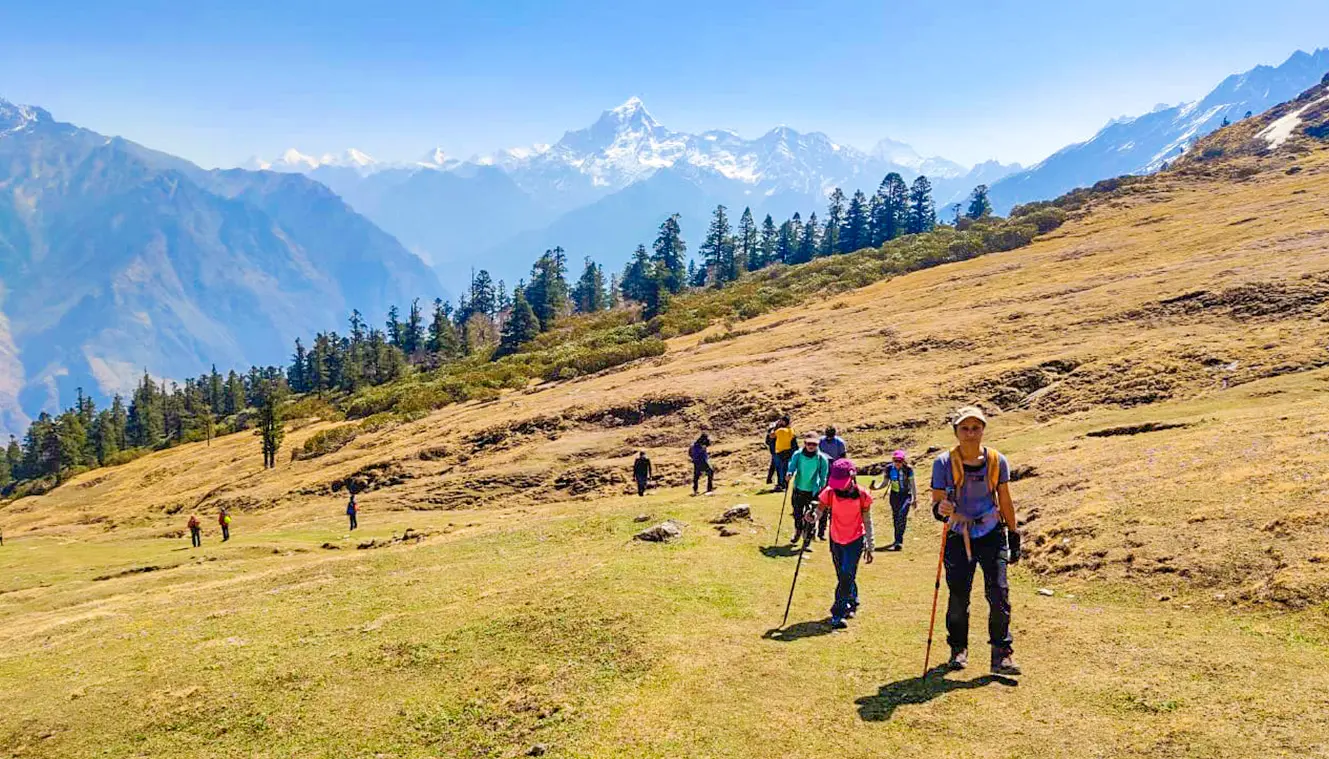
Trek from Khullara to Pangarchulla Summit and Back to Khullara Camp | Summit Day
- Altitude (Pangarchulla Summit): 4,600 m / 15,100 ft
- Trek Distance: 14 km | 11-12 hrs
- Accommodation: Tent
The big day begins early, under the cover of darkness, as you set off at 2:00 am for the challenging climb to Pangarchulla Summit. Carry at least 2 liters of water, as there are no water sources along the way. The trail starts similarly to the previous day, following Lord Curzon’s trail for about 1.5 hours before diverging into steeper territory.
The first stretch involves a ridge climb that transitions to level snow grounds. As dawn breaks, the fluorescent hues of sunrise illuminate the trail, filling you with fresh energy. When you approach the base of Pangarchulla Peak, take a moment to appreciate the views of the Chaukhamba Massif and other towering peaks like Mana, Kamet, and Hathi-Gauri.
Your trek leader will prepare you for the final push, including roping up if necessary. The climb to the summit involves a steep ridge walk, with a challenging knife-edge ridge along the way. Microspikes are essential here to maintain grip on the icy surface, and strong winds may add to the difficulty.
The summit is reached at earliest. Any delays beyond this point are not advisable due to melting snow, which can make the descent treacherous. The final stretch requires crossing a series of six ridges, and in some cases, using an ice axe for carving steps in thick snow.
Reaching the summit is a moment of triumph. The 360-degree views of the Garhwal Himalayas are unparalleled, with prominent peaks like Nanda Ghunti, Trishul, Dronagiri, Kamet, and Chaukhamba towering around you. A small temple marks the summit, adding a spiritual touch to this exhilarating experience.
Spend some time here, soaking in the grandeur of the Himalayas, before beginning your descent.
The journey back to Khullara Camp takes approximately 3-4 hours. Descending through snow-covered slopes requires caution, as the melting snow can make the trail slippery. Once back at the camp, enjoy a well-deserved rest and reflect on the day’s extraordinary adventure.
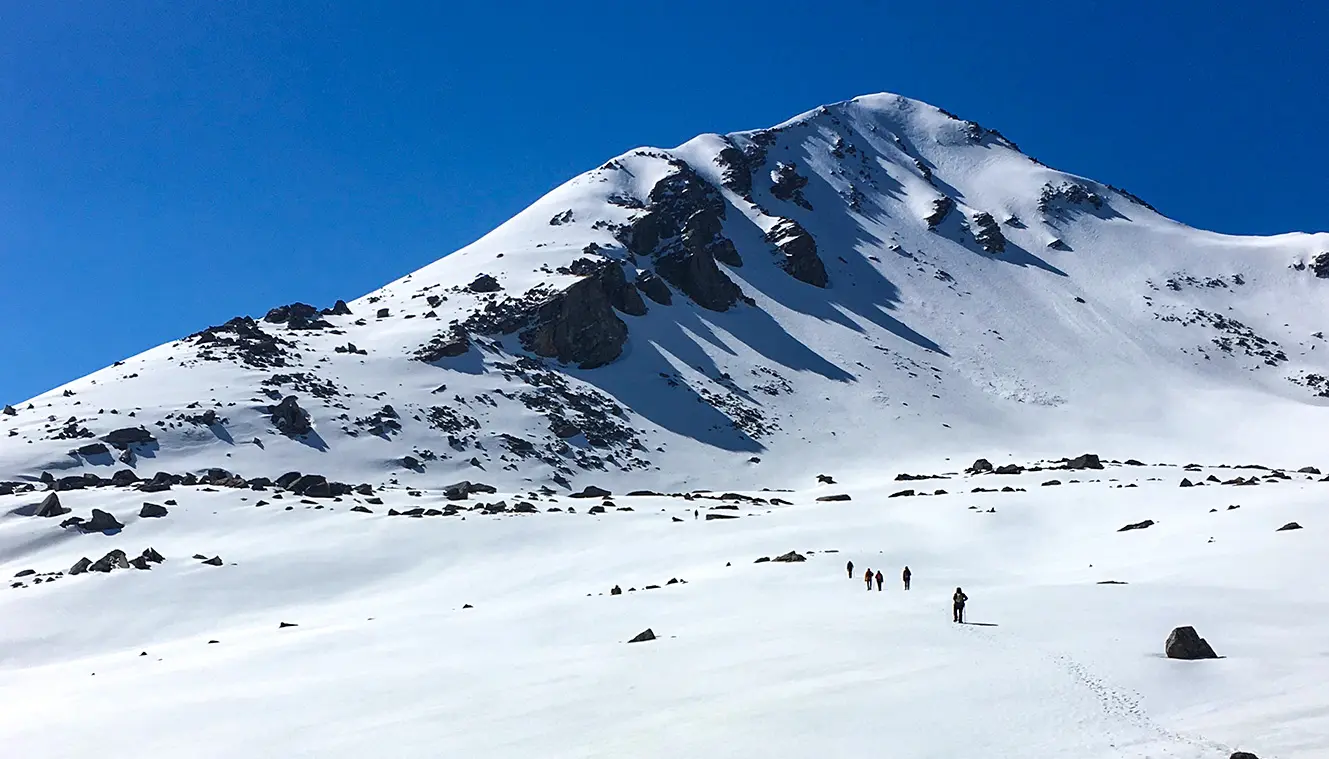
Trek from Khullara Camp to Tugashi Village and Drive to Pipalkoti
- Altitude (Pipalkoti): 1,350 m / 4,400 ft
- Trek Distance: 7-8 km | 4-5 hrs
- Drive Distance (Tugashi to Pipalkoti): 50 km | 2-3 hrs
- Accommodation: Guest House
The last morning on the trail begins with breakfast at Khullara Camp. Today’s trek is a gentle descent through forested paths and familiar village trails. When you leave the high-altitude camp behind, the snow peaks gradually fade from sight, replaced by the serene charm of oak and rhododendron forests.
At Tugasi village, take a moment to fill your water bottles with clean drinking water before boarding the vehicle for the 2-3 hour drive to Pipalkoti. The journey provides a blend of nostalgia and comfort as the rugged trails give way to smooth roads and signs of civilization reappear.
Arrive at Pipalkoti by late evening and check into the guesthouse. After days of camping, the warm comfort of a guesthouse feels like a reward. Over hot dinner, there will be a debriefing session where you can reflect on the journey and the incredible experiences shared with your trekking team.
Rest well, cherishing the memories of the trail as you prepare to head back to the bustle of daily life the next day.
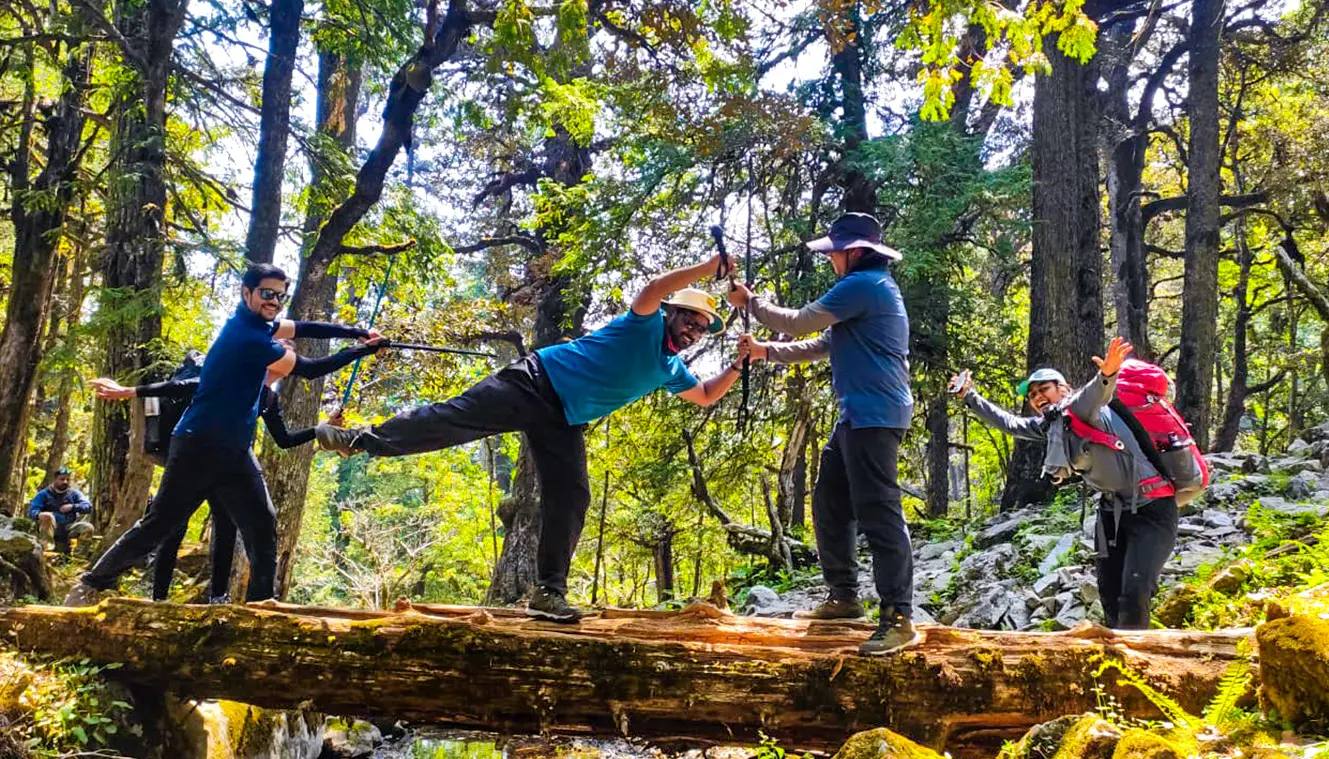
Drive from Pipalkoti to Rishikesh
- Drive DIstance(Pipalkoti to Rishikesh): 220 km | 8-9 hrs.
After a restful night at Pipalkoti, you’ll wake up to the serene surroundings one last time. The drive back to Rishikesh begins early. As you leave the tranquil hills behind, the journey will give a mix of bittersweet nostalgia and a feeling of accomplishment.
The route from Pipalkoti to Rishikesh is a visual treat, with rolling hills, river valleys, and glimpses of village life along the way. This stretch provides ample opportunity to soak in the sights of Mother Nature, as if bidding you a fond farewell.
Breakfast and lunch will be enjoyed at roadside dhabas, giving you a taste of the simple and authentic local flavors one last time.
By late afternoon, you’ll arrive in Rishikesh, the gateway to the Himalayas. The familiar hum of the city will mark the end of your trek, but the memories of Pangarchulla’s summit, forest trails, and snowfields will stay with you forever.
As the mountains slowly recede into the distance, take a moment to reflect on the adventure that challenged your limits, brought you closer to nature, and filled your heart with awe. Until next time, the Himalayas will await your return.
Safe travels back home, and until next time. Keep exploring!
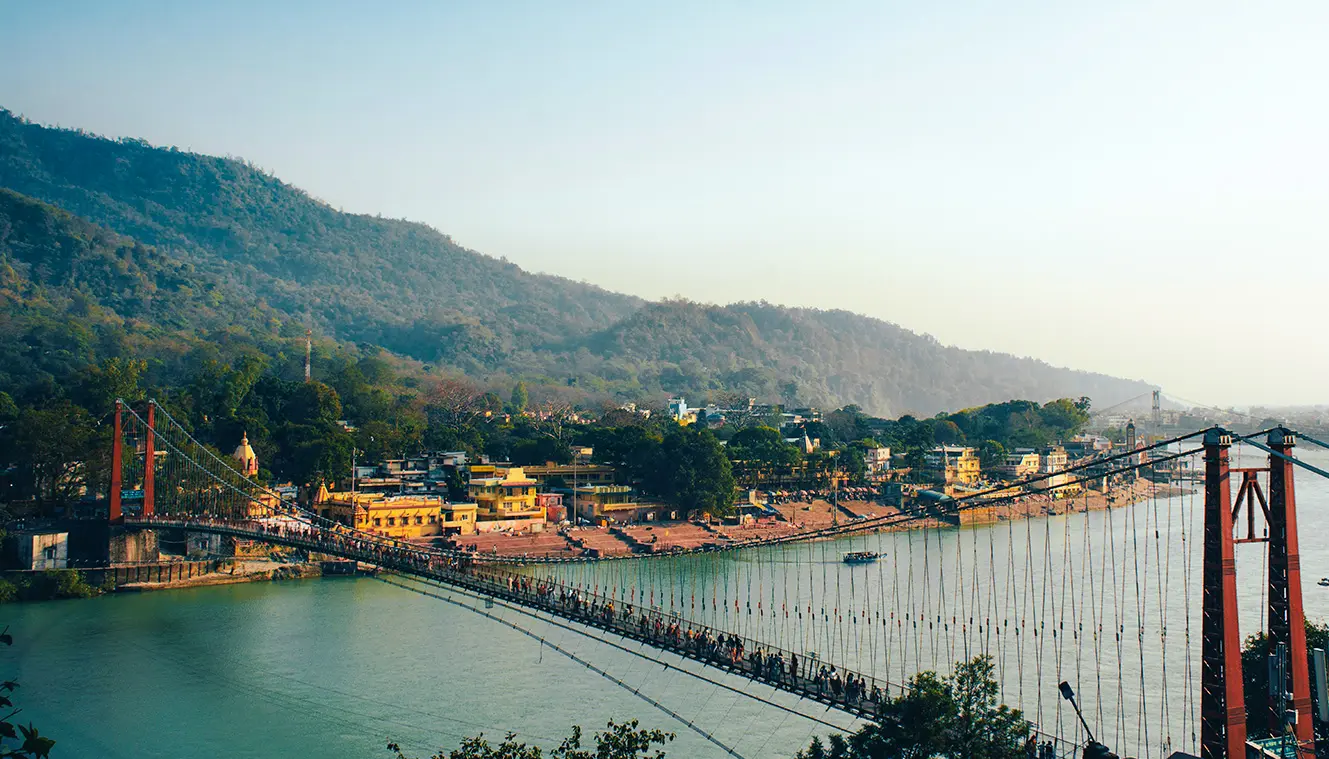
Day-1: Rishikesh to Pipalkoti
- Altitude: 1,350m / 4,400ft
- Drive Distance: 220 km | 9-10 hours
Day-2: Drive from Pipalkoti To Tugashi village And Trek To Gulling Top
- Altitude:
- Tugashi village: 2450m / 8000 ft.
- Gulling Top: 2,850 m / 9,400 ft.
- Drive Distance (Pipalkoti-Tugashi ): 50 km | 2-3 hrs.
- Trek Distance: 3km | 2-3 hrs.
Day-3: Trek from Gulling Top to Khullara
- Altitude (Khullara): 3,350m / 11,000ft
- Trek Distance: 5-6 km | 4-5 hrs
Day-4: Trek from Khullara to Kuari Pass via Khullara Top and Back to Khullara
- Altitude (Kuari Pass): 3,800 m / 12,500 ft
- Trek Distance: 3-4 km (each way) | 5-6 hrs
Day-5: Trek from Khullara to Pangarchulla Summit and Back to Khullara Camp | Summit Day
- Altitude (Pangarchulla Summit): 4,600 m / 15,100 ft
- Trek Distance: 14 km | 11-12 hrs
Day-6: Trek from Khullara Camp to Tugashi Village and Drive to Pipalkoti
- Altitude (Pipalkoti): 1,350 m / 4,400 ft
- Trek Distance: 7-8 km | 4-5 hrs
- Drive Distance (Tugashi to Pipalkoti): 50 km | 2-3 hrs
Day-7: Drive from Pipalkoti to Rishikesh
- Drive DIstance(Pipalkoti to Rishikesh): 220 km | 8-9 hrs.
Note:
- Keep a buffer day in your travel plan.
- If buffer day is not used in the travel then it can be used to Explore Rishikesh.
- Read the article Things to do in Rishikesh.
- Distance, Altitude, and Trekking hours are approximate and rounded off.
- Keep the original and copy of ID proof handy.
- Come one day early if planning to come by flight.
Pangarchulla Peak Trek Graph
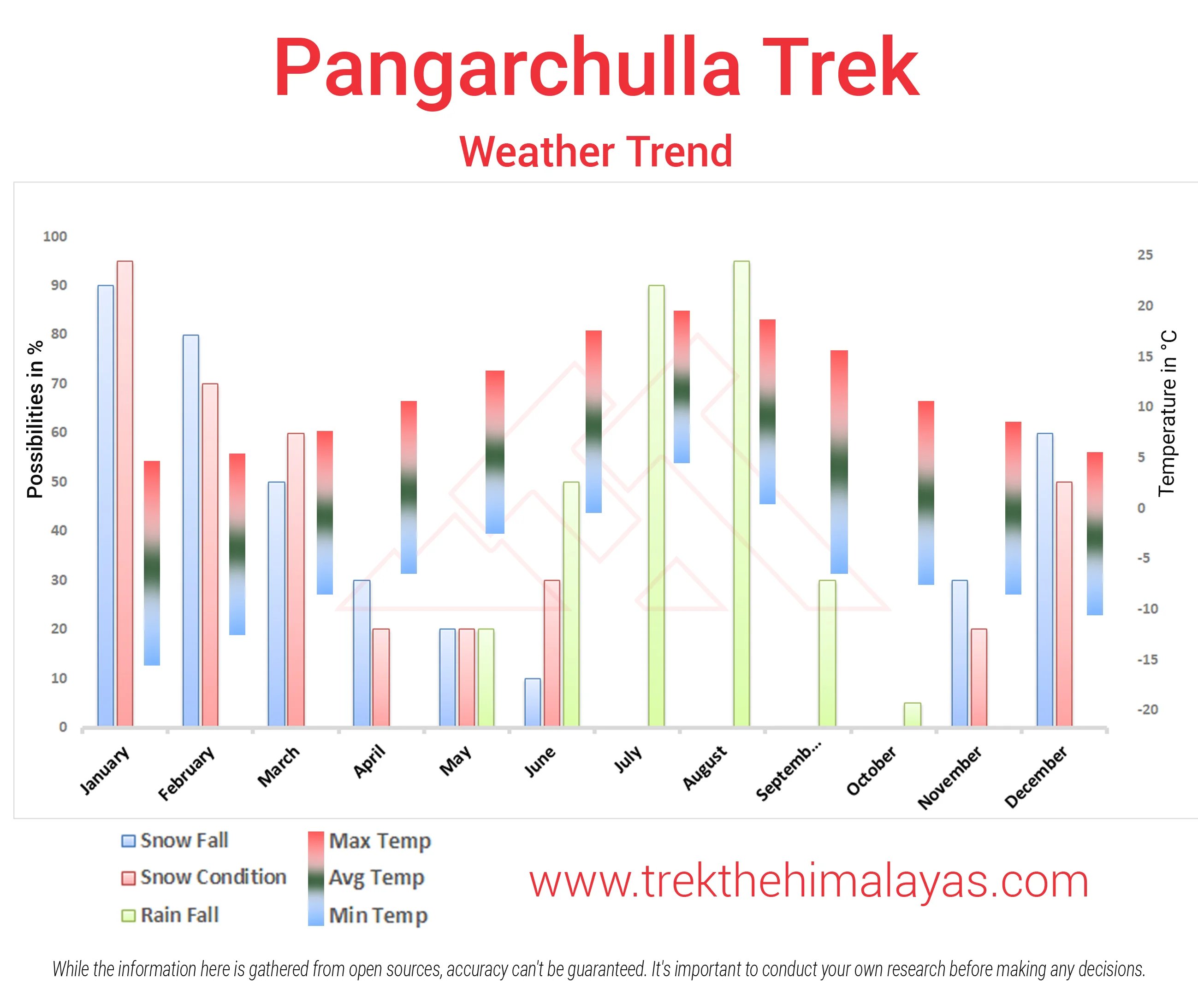
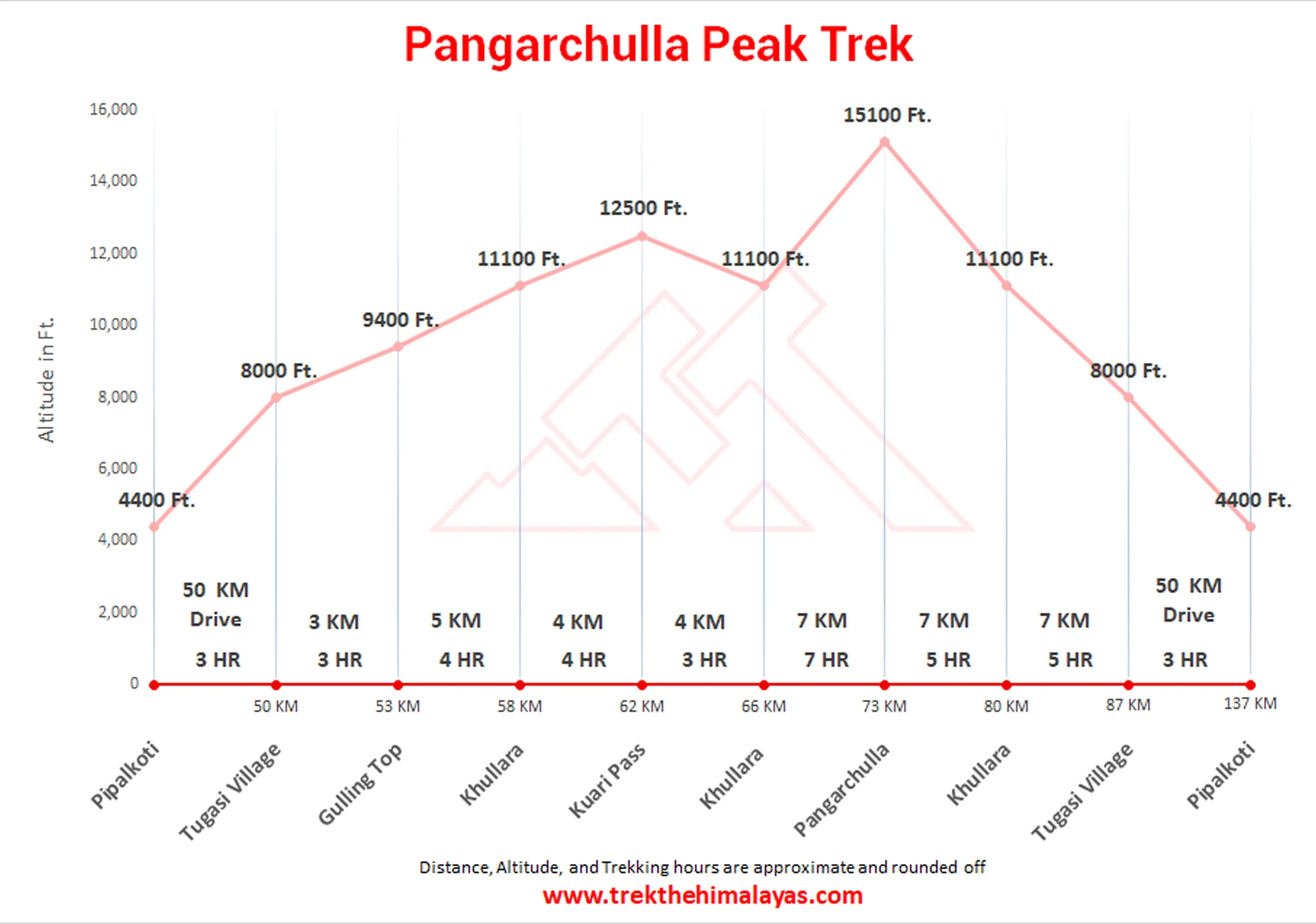
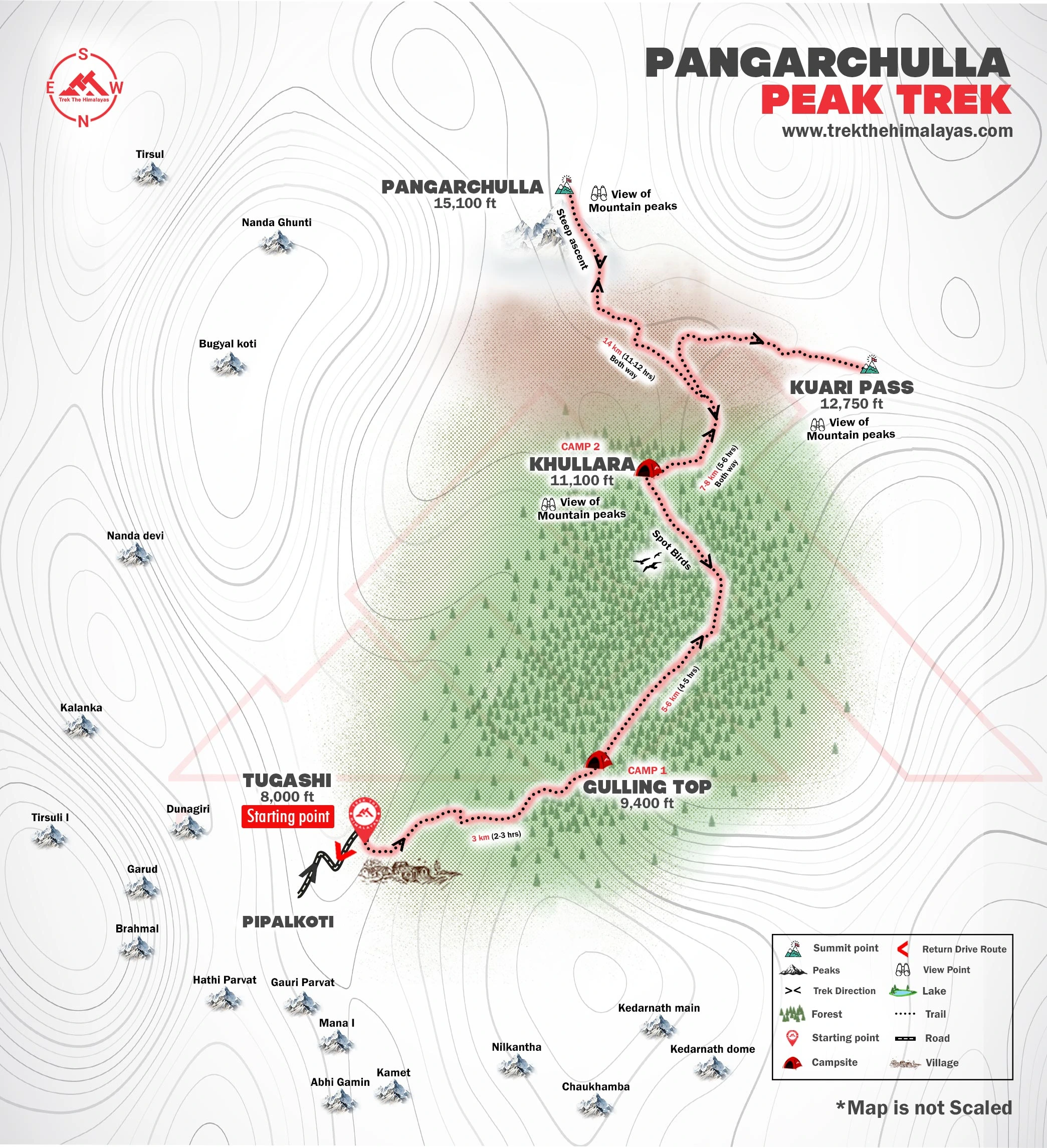
- Pulse rate at rest must be in between (60 to 100 beats per minute).
- Blood Pressure Reading must be in between (DIASTOLIC 75 – 85, SYSTOLIC 100 - 130 mm Hg).
- Respiratory rate at rest must be in between (12 to 20 breaths per minute).
- Should not have Liver and kidney issues.
- Should not have Diabetes Mellitus, Bronchial Asthma, Heart problems, Hypertension, etc.
- No pacemaker implant.
- People with Sinus issues, Epilepsy please contact to trek coordinator before booking the trek.
- If your BMI is not normal, Please contact our Trek coordinator before Trek booking.
Medical & Disclaimer Form (Mandatory Documents) Click here to download Medical & Disclaimer Form
Government employees can avail the benefit of Special Casual Leave (SCL) when they join us for a trekking expedition. As per Pay Commission guidelines, up to 30 days of Special Casual Leave can be availed in a calendar year for trekking or mountaineering expeditions conducted through a registered organisation.
Trek The Himalayas is a registered adventure tour operator with the Indian Mountaineering Foundation (IMF) and the Ministry of Tourism (MoT), making your trek eligible for SCL benefits.
To apply, email us at info@trekthehimalayas at least 20 days before the trek departure date, with the following details:
- Trek name and trek date
- Booking details
- Full name
- Designation
- Department and department address
This benefit is exclusive to Indian Government employees and is applicable only for treks within India.
- Junior trekkers (below 15 years) should have a company of parents/guardians.
- Trekkers between 15 to 18 years can come solo with the disclaimer form signed by parent/guardian.
- Medical & Disclaimer Form (Mandatory Documents) Click here to download Medical & Disclaimer Form
TTH welcomes all trekkers to enjoy the amazing stargazing experiences in the Himalayas! Every night will be a window to the universe with an unforgettable connection with the cosmos.
You might have trekked to high altitudes, slept under star loaded skies, and wished you could see those twinkling stars closely. Well, TTH is turning that dream into reality! We are now bringing telescopes on our treks, giving you the incredible opportunity to gaze closely at constellations, stars, and planets. It is not only about the mountains anymore, but also about exploring the universe from some of the most beautiful and remote places on Earth.
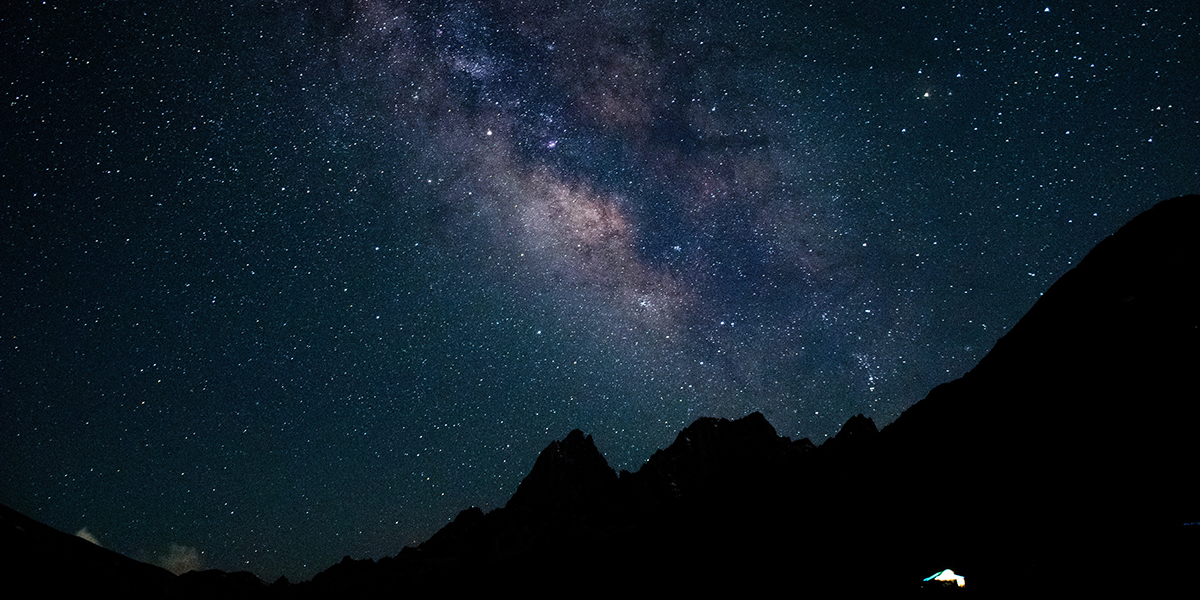
Your adventure can now be even more cosmic! Imagine lying under a blanket of stars, the night sky stretching endlessly above you, as you drift into dreams of distant galaxies.
Stargazing, the timeless art of gazing at the night sky and marvelling at the vast expanse of the universe. It’s more than just gazing; it’s an experience that connects us to the cosmos, inviting us to ponder the mysteries of the universe. As we trace constellations that have guided explorers for centuries and watch the beauty of the Milky Way, we feel a special connection with the universe.
Through the lens of stargazing, we gain a deeper appreciation for the natural world and our place within it. It invites us to slow down, look up, and lose ourselves in the celestial dance of the stars.
Why Stargazing with Telescopes on Treks is a Unique Experience?
High-altitude treks provide a perfect point for stargazing. The air is crisp and clear, far from the light pollution of cities, offering an unparalleled view of the night sky. Now, imagine using a telescope in these pristine conditions. You are not just looking at distant dots of light, but you can watch the stunning moon closely and spot lots of constellations and a few planets.
The silence of the mountains, paired with the vastness of space seen through a telescope, gives you a sense of how small yet connected we are to the universe.
It is a moment of reflection, wonder, and an experience that will stay with you long after you descend back into the valleys. With our guides this would not just be stargazing, but a full cosmic exploration and along with the serene background of the Himalayas the experience would be even more enhancing.
What can you spot with the Telescope?
Planets
Using our telescopes on these treks, you will get to see some of the most fascinating planets in our solar system up close including Venus, Jupiter, Saturn, and Mars.
Constellations and Stars
In the Himalayan night sky, countless stars twinkle overhead. With telescopes, not only do you get to see them more closely, but you can also locate entire constellations and even distant star clusters.
One of the most mesmerizing sights is the Andromeda Galaxy, the closest spiral galaxy to our Milky Way. With a telescope provided by Trek The Himalayas, you can spot this vast collection of stars, which appears as a faint, misty streak across the sky. It’s a humbling experience to gaze upon a galaxy that is 2.5 million light-years away, knowing that its light has travelled across the universe just to meet your eyes.
In addition to Andromeda, the Himalayan night sky is also home to the Milky Way Galaxy. During certain times of the year, the Milky Way appears as a dense, glowing band stretching across the sky, filled with countless stars, nebulas, and cosmic dust. It’s a sight that can make you feel like you’re peering into the galaxy's heart. The beauty of this structure and the sheer number of stars call it home.
You may also catch a glimpse of the Orion Nebula, one of the brightest and most studied star-forming regions in the night sky. Located in the constellation of Orion, this nebula is a stellar nursery, where new stars are born, and it glows with the light of young, hot stars. The constellations that make up our zodiac are also prominently visible, from the mighty Taurus to the graceful Gemini. These constellations, along with others like Ursa Major, Cassiopeia, and the Southern Cross, form familiar patterns that have guided travelers and stargazers for centuries.
A Closer View of the Moon
Observing the Moon through a telescope offers an extraordinary experience, allowing you to see its craters, valleys, and surface features in stunning detail. The sharp clarity of these lunar landscapes creates a sense of wonder, making you feel as though you’re standing on the Moon itself, exploring its rugged terrain up close.
Sun
You can get a closer view of the sun through a telescope using a solar filter. Using a solar filter with a telescope allows you to observe the Sun in remarkable detail, offering a safe and enhanced view of its surface. With this setup, you can clearly see the fascinating features of the sun, providing a deeper appreciation of the dynamic activity on our closest star.
Closer View of Valleys and Mountain Ranges
Our telescope will give you a closer view of mountain peaks, ranges, and valleys, and let you clearly see birds and animals in the distance.
Specifications of our Telescope
We use a 6" Nightwatch Dobsonian Telescope by GSO (D=150mm / F=1200mm Dobsonian F/8 Telescope) to provide exceptional clarity and detail, enhancing your stargazing experience and making it truly special.
Ready to Explore the Universe with TTH?
At Trek the Himalayas, we believe in pushing the boundaries of adventure. Our new stargazing and planet-watching with telescopes offer a unique experience that blends the thrill of trekking with the awe of exploring the cosmos. Whether you are a seasoned trekker or new to the trails, this is an opportunity to see the night sky like never before.
TTH Special Stargazing Treks
We’ve added stargazing experiences to some of our most loved treks. On these treks, you can enjoy the night sky like never before!
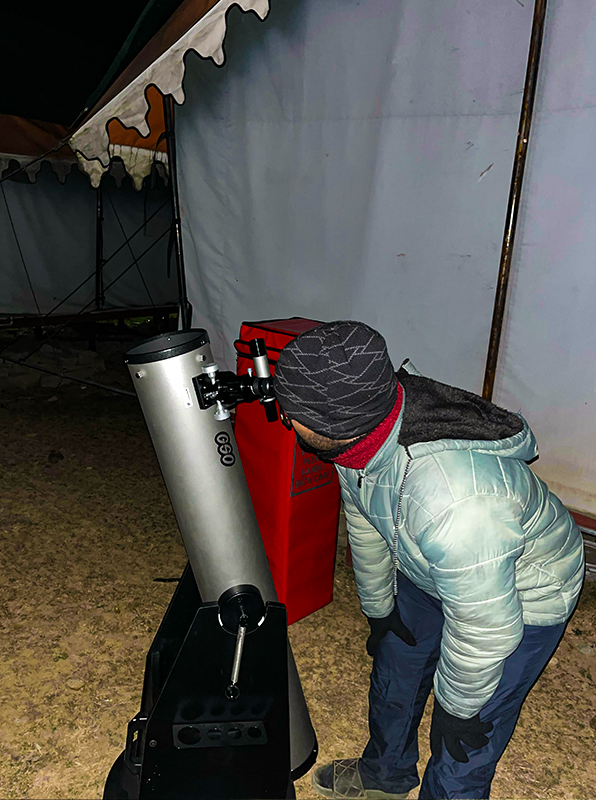
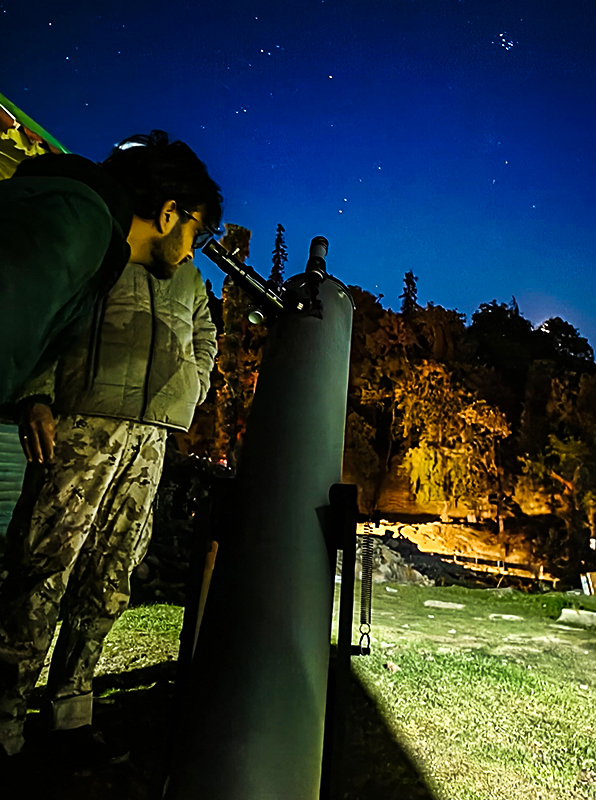
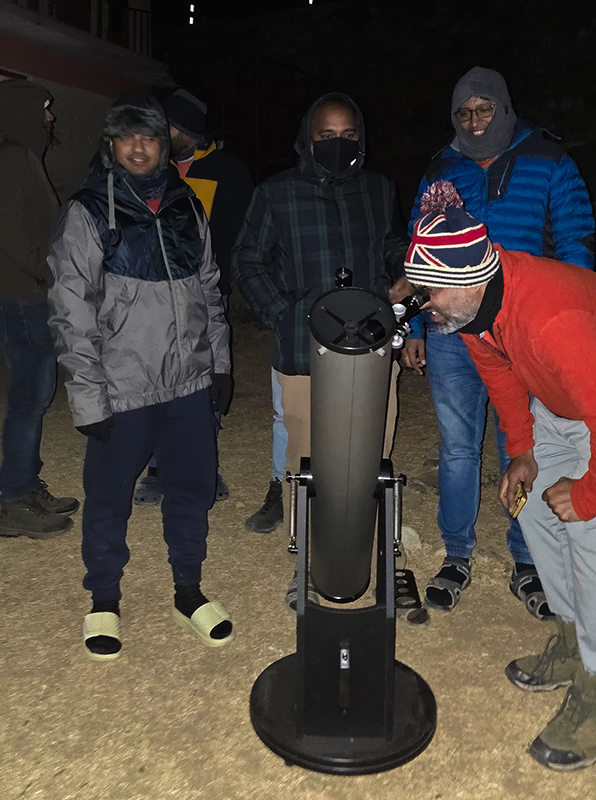
Treks with Stargazing Experiences:
| Trek Name | Stargazing Campsite |
|---|---|
| Kedarkantha Peak Trek | Sankri Base Camp |
| Brahmatal Trek | Lohajung Base Camp |
| Sandakphu Trek | Samanden camp site |
| Surya Top Trek | Natin Base Camp |
| Dayara Bugyal Trek | Natin Base Camp |
| Winter Kuari Pass Trek | Pipalkoti Base Camp |
| Chopta Chandrashila Trek | Baniyakund Campsite |
| Ali Bedni Bugyal Trek | Lohajung Base Camp |
| Pangarchulla Peak Trek | Pipalkoti Base Camp |
Join us to explore the beauty of the night sky in a way that only the Himalayas can offer!
Important Links
- Mandatory Documents to Bring on A Trek Click Here.
- How to pay Add-ons, Submit Medical Forms, and Dietary Preferences Click Here to watch Video
How To Reach
Pick-Up Information
- It is essential for everyone to arrive at Rishikesh (06:00 am)
- Pick-up Location - Back Stayz Laxman Jhula Near SBI Bank Tapovan
- Once you have reached Rishikesh, TTH will manage the rest of your travel arrangements, if you have opted for TTH's pick-up service, you can select this option during the booking process by adding it as an add-on.
Options to Reach Rishikesh
First, you can arrive at Delhi, Dehradun airport or Chandigarh. The journey from these locations to Rishikesh is explained below.
1. Take overnight train/bus to Rishikesh.
2. Take overnight train/bus to Haridwar and drive to Rishikesh (25km | 35 min drive with normal traffic).
3. Take overnight train/bus to Dehradun and drive to Rishikesh (50km | 1hr 20min drive with normal traffic).
( We always recommend going for the govt. Buses over the private ones outside the bus station as based on the experience we have found that there are very high chances of delay involved with private buses. Also, govt. Buses are always more reliable. Whichever bus you choose, just make sure to reach Rishikesh at least by 05:30 am. )
4. Board a flight to Dehradun airport (Jolly Grant Airport) (21 km, 30 min). If you're arriving by air, then come one day in advance.
Drop-Off Information
- The designated drop-off point is Tapovan, Rishikesh.
- Reach in Rishikesh by 6:30 to 7:30 pm.
- Please consider planning your subsequent travel arrangements after 10:00 pm.
Note - In July and August month always have a buffer day in your Itinerary due to the Monsoon.
- It's highly advisable to keep a buffer day in your travel plan. If the buffer day is not used, it can be used to explore Rishikesh.
( If you prefer to travel independently to Base camp and don't want to take TTH's pick-up service, you can either take a government bus or book a private cab from Rishikesh. Your trek coordinator will provide guidance on how to arrange for the bus or cab booking. )
- TTH offers comfortable transportation through Tempo Traveler, Bolero, or equivalent vehicles. If you wish to upgrade your mode of transportation, please contact your trek coordinator for further assistance.
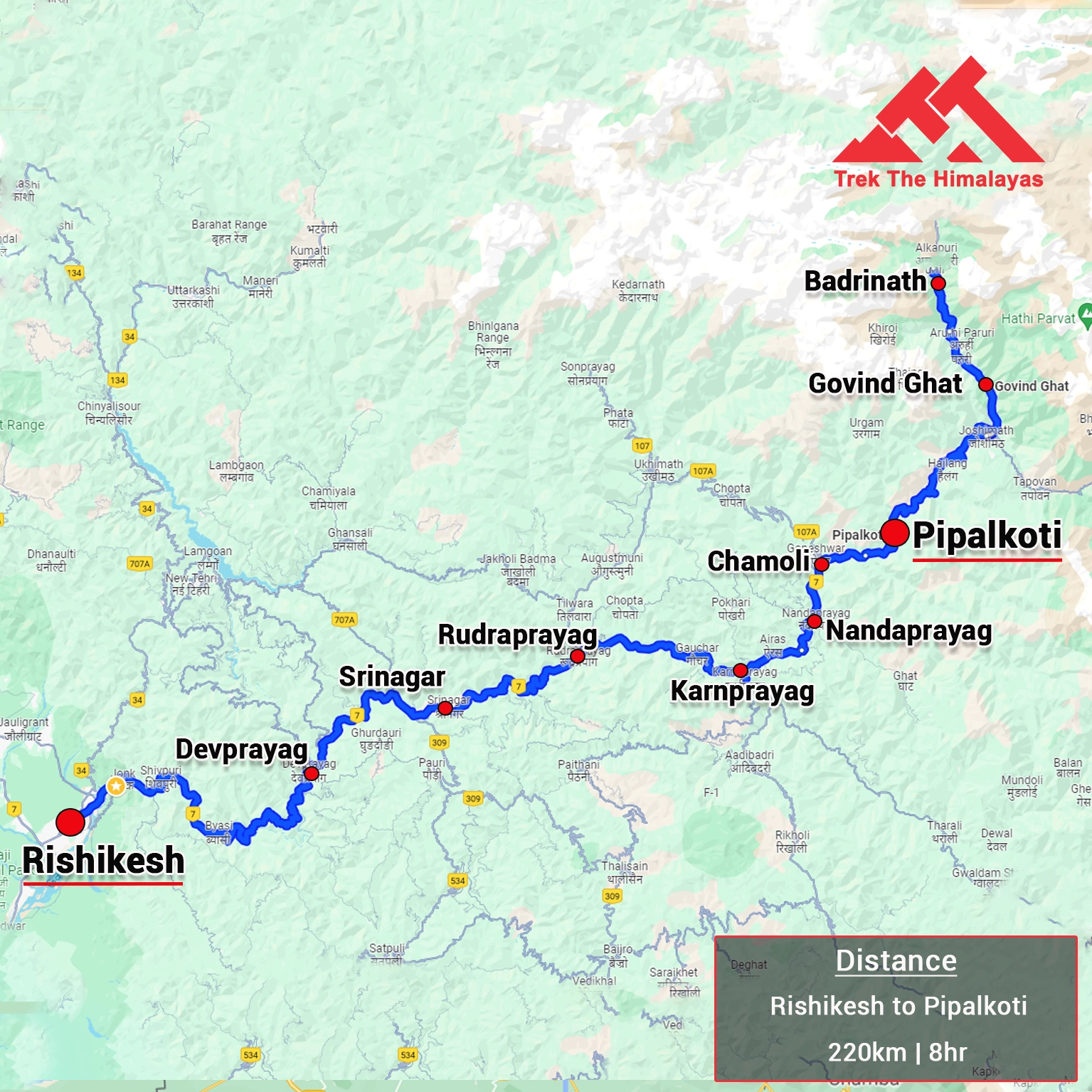
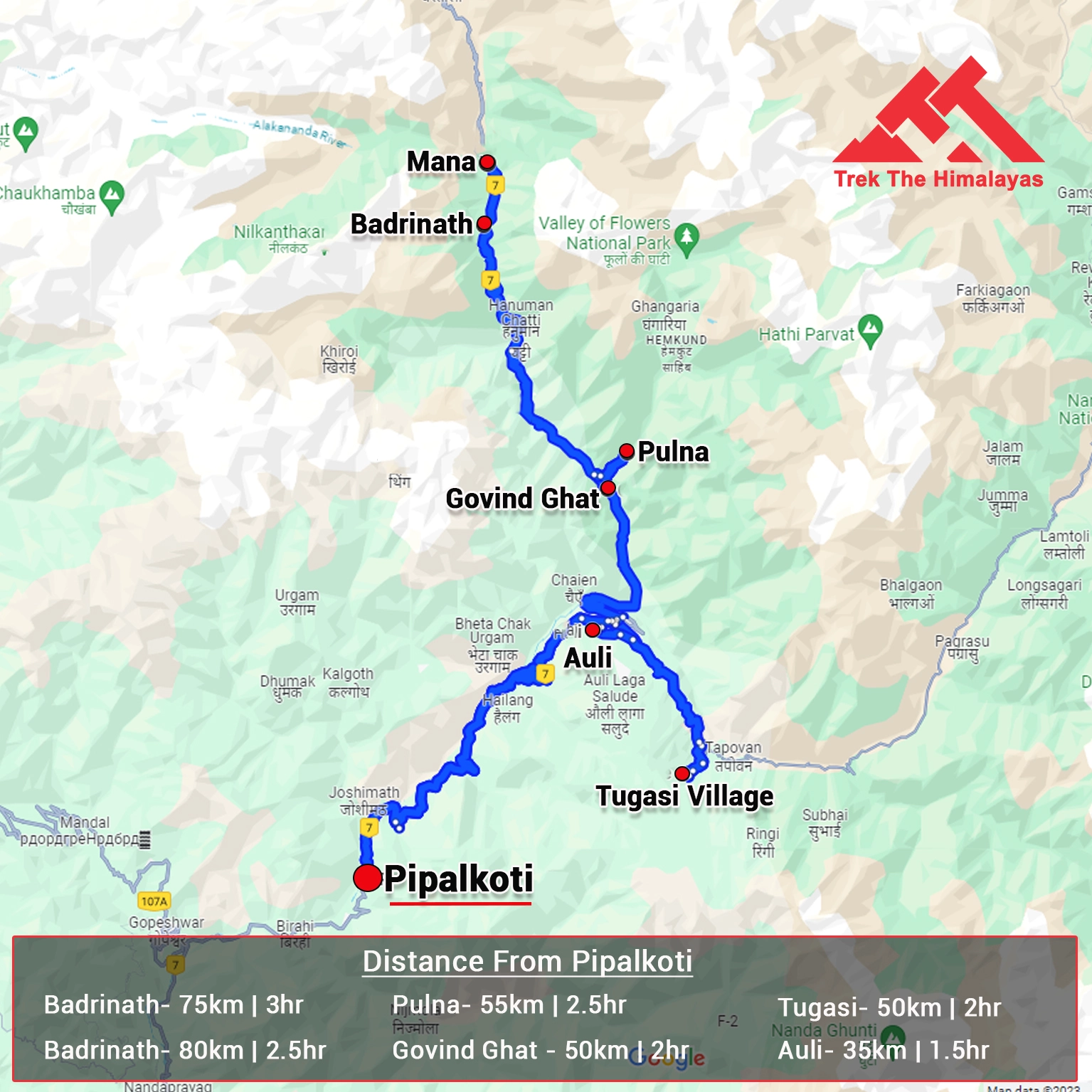
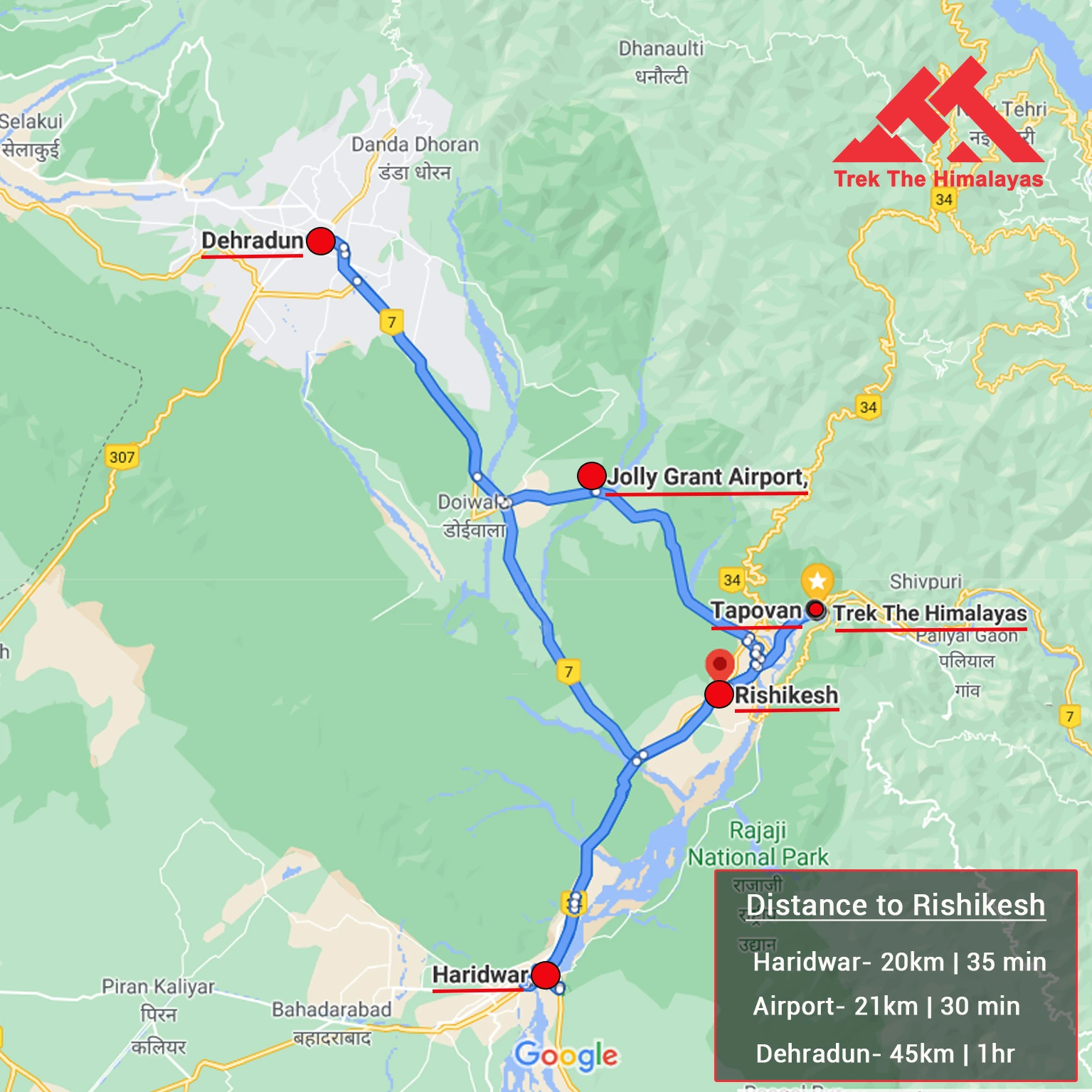
Cost Terms
Inclusion
1. Accommodation (as per the itinerary):
- Guest house (sharing basis).
- Camping while the trek (Twin sharing basis).
2. Meals (Veg + Egg):
- All meals while on trek.
- Day 1 dinner to day 6 dinner.
3. Support:
- 1 Versatile base camp manager: handles communication and deploys extra manpower in emergencies.
- 1 Mountaineering & First aid qualified professional trek Leader.
- 1 Experienced high altitude chef.
- Local experienced guides (Number of guides depending on the group size).
- Enough support staff.
4. Trek equipment:
- Sleeping bag, Sleeping liners (if required), Mattress, Utensils.
- 3 men all season trekker tent (twin sharing), Kitchen & Dining tent, Toilet tent.
- Camping stool, Walkie talkie.
- Ropes, Helmet, Ice axe, Harness, Gaiters & microspikes (if required).
5. First aid:
- Medical kit,Stretcher,Oxygen cylinder,Blood pressure monitor,Oximeter,Stethoscope.
6. Mules/porters to carry the central luggage.
7. Cloakroom facility available at the base camp for additional luggage.
8. All necessary permits and entry fees, up to the amount charged for Indian.
9. Trek Completion Certificate.
Exclusion
- Insurance (For non-Indian Nationals, NRI or OCI card holders).
- Food during the transit.
- Any kind of personal expenses.
- Mule or porter to carry personal luggage.
- Emergency evacuation, hospitalization charge, etc.
- Any extra costs incurred due to extension/change of the itinerary due to natural calamities roadblocks, vehicle breakdown, etc. factors beyond our control
- Transportation (as per the itinerary):
- Transport Rishikesh to Pipalkoti and return.
- Anything not specifically mentioned under the head Inclusion.
Things can be provided on demand and availability (participant has to pay extra for these things).
1- Satellite phone/set phone - is a type of mobile phone that connects via radio links via satellites orbiting the Earth instead of terrestrial cell sites like cellphones. Therefore, they can operate in most geographic locations on the Earth's surface.
2- Gamow/PAC HAPO Bag (Portable Hyperbaric Bag) - is a unique, portable hyperbaric chamber for the treatment of acute mountain sickness (AMS), also known as altitude sickness.
3- AEDs (Automated External Defibrillators) - are portable life-saving devices designed to treat people experiencing sudden cardiac arrest, a medical condition in which the heart stops beating suddenly and unexpectedly.
Cancellation Terms
To request a cancellation, please email us at info@trekthehimalayas.com using your registered email ID.
Cancellations prior to 25 days from the start of the Trip
Refund Options
- 5% deduction of trek fee
- 100% trek fee cash voucher for any trip till one year
- Transfer your trek (any trek, any date) to your friend
Cancellation between 24 days and 15 days to the start of the Trip
Refund Options
- 30% deduction of trek fee
- 100% trek fee cash voucher for same trip till one year
- 85% trek fee cash voucher for any trip till one year
- Transfer your trek (same trek, any date) to your friend
Cancellation between 14 days and 10 days to the start of the Trip
Refund Options
- 50% deduction of trek fee
- 80% trek fee cash voucher for same trip till one year
- 70% trek fee cash voucher for any trip till one year
- Book the same trek, in the same season, with any other batch
- Transfer your trek (same trek, any date) to your friend
Cancellation less than 9 days to the start of the trek.
Refund Options
- No cash refund
- 20% trek fee cash voucher for the same trip till one year
- 10% trek fee cash voucher for any trip till one year
- Transfer your trek (same trek, same date) to your friend
- To reschedule a trek (same trek only), a 30 % rescheduling fee of the trek cost will apply.
Cancellation Policy (Emergency Cases):
In case of a death in the immediate family (parents, siblings, spouse, children) or if the trekker is hospitalized (min. 48 hours) or suffers a fracture (leg/arm) within a week before the trek, even if canceled a day before:
90% trek fee refund in cash & 10% as a voucher (valid for 1 year, for any India trek).
Valid documents required. We’re here to support you during tough times.
Note:
- Change of trek batch is dependent on the availability of seats in the batch
- In case of transferring a trek to a friend, he/she should satisfy all the mandatory requirements put forward by TTH
- TTH holds the right to change/cancel the policies, without prior notice
Booking and Payments
- The Participant is responsible for verifying the accuracy of all details, including Trip dates and personal documentation, at the time of booking.
- Payments must be made in accordance with the timelines and instructions provided by TTH. Late payments may result in cancellation of booking without refund.
- In the event of a cash refund, only the portion of the payment made in cash shall be eligible for refund in cash. Any booking made using voucher, discounts, promotional codes, or through any non-cash mode of payment shall not be eligible for a cash refund under any circumstances.
- Refunds, if applicable, shall be processed within 15–30 working days of confirmation.
- All add-on bookings are subject to the respective add-on cancellation policy, and refunds will be processed accordingly.
- Voucher Terms
- This is a non-transferable voucher
- The voucher cannot be merged with any other offer of Trek The Himalayas
- The voucher is valid for Trek booked directly with Trek The Himalayas in India
- To avail the voucher please use your register phone number or e-mail id
- All the other Terms of booking a trek with Trek The Himalayas are applicable to the voucher
Itinerary and Modifications
- TTH reserves the right to modify, shorten, or cancel any part of the Trip due to transportation delays, weather, health emergencies, or other unforeseen circumstances including Force Majeure.
Cancellations and Refunds
- No refunds or vouchers, partial or otherwise, shall be provided for voluntary withdrawal, non-utilisation of services, or removal from the Trip.
- If TTH cancels the Trip before arrival at the designated pick-up point due to unforeseen circumstances or Force Majeure, the Participant may choose from:
- An alternate Trip/date.
- A credit voucher valid for one (1) year.
- Transfer to another Trip, with cost differences payable by the Participant.
- If the Trip is abandoned post-arrival at the designated pick-up point, no cash refund or voucher shall be issued. The Trek Again Policy may apply at TTH’s discretion.
- TTH shall not be liable for any associated travel costs such as flights, accommodation, or visa fees.
Force Majeure
- Events beyond its control including but not limited to earthquakes, landslides, strikes, curfews, war, pandemic, government restrictions, heavy rainfall or snowfall, windstorms, road blockages, trail disruption, or withdrawal of permits, TTH shall not be held liable for any cancellation, delay, or service modification caused by Force Majeure.
Trek Essentials
Rent EquipmentPDF Of Trek Essential Download
| Backpack with rain cover | (50 - 60 ltr) with comfortable shoulder straps |
| Day pack with rain cover | 20 - 30 ltr (If off-load opted) |
| Walking stick | Advisable (At least one) |
| Water Bottle / Hydration pack | 2 bottles of one liter each, People who use hydration pack 1 hydration pack and 1 bottle of one liter, Carry at least one thermos flask. |
| Small size tiffin/lunch box | 1 Nos |
| Snacks | Energy bars, dry fruits, electral/ors |
| Personal Medical Kit | Consult your doctor |
| T-Shirt (Synthetic quick dry) | 1 Full & 2 Half sleeves |
| Fleece T-shirt | 1 Nos |
| Wind stopper / Fleece jacket | 1 Nos |
| Windproof Jacket | 1 Nos |
| Down feather / Hollow jacket | 1 Nos |
| Thermal inner (Upper and Lower) | 1 Pair |
| Trek Pant (Synthetic quick dry) | 2 Nos |
| Wind stopper / Fleece Pant | 1 Nos |
| Waterproof gloves | 1 Pair |
| Fleece / woollen gloves | 1 Pair |
| Poncho / waterproof Jacket and pant | 1 Nos |
| Sunscreen | 1 Nos |
| Moisturiser | 1 Nos |
| Chap-stick / Lip balm | 1 Nos |
| Toothbrush and toothpaste | 1 Nos |
| Toilet paper & Wipes | 1 Nos |
| Soap / hand sanitizers | 1 Nos |
| Antibacterial powder | 1 Nos |
| Quick dry towel | 1 Nos |
| Head torch | 1 Nos. (Avoid Hand torch) |
| Sun Cap | 1 Nos |
| Woolen cap | 1 Nos. |
| Balaclava | 1 Nos. |
| Buff / Neck-gaiters | 1 Synthetic & 1 Woollen |
| Sunglasses | UV with dark side cover, People who wear spectacles - (A)- Use contact lenses | (B)- Photo chromatic glasses |
| Trekking shoes | 1 Pair (Water-resistant, high ankle, good grip) |
| Floaters / flip-flops | 1 Pair |
| Cotton socks | 6 pairs |
| Woollen socks | 1 pairs |
| Gaiters | 1 Pair (TTH provides when required) |
| Micro spikes | 1 Pair (TTH provides when required) |
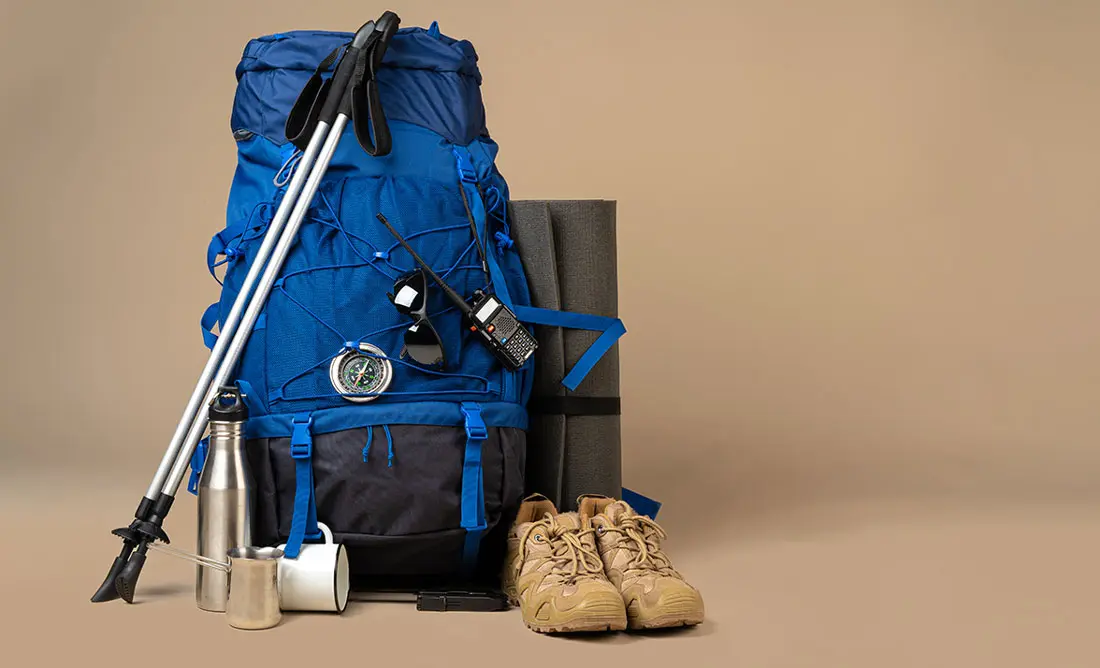
Frequently Asked Questions(FAQ)
To register with TTH, visit our website - www.trekthehimalayas.com and create your account. To create your account you will need to use your email address and fill in all the details, set your unique password and your account is ready to use.
- To book a trek with TTH, you first need to register with us and create an account.
- Choose the trek that you want to do and click on available dates.
- You will land at the login page, fill in the required details.
- Add Participants, choose add-on services click on the Pay now button, choose your preferred payment method, and make the payment. TTH accepts multiple payment options, including credit/debit cards, net banking, and UPI.
- You will receive a confirmation email from TTH with all the necessary details about the trek, including the meeting point, transportation, accommodation, and other important instructions.
- Click Here to watch Video
please send an email to us at info@trekthehimalayas.com or reach out to the numbers provided in the Help and Support section of your Trek Page. We will ensure that your issue is promptly resolved.
To book services such as off-load luggage and transportation, you can find them listed as add-ons. These additional services can be booked at the time of your initial booking. If you miss booking add-ons during the initial reservation, you can log in anytime and easily book 4 days before the departure date add-ons through the platform.
If you have booked the wrong trek or selected the wrong date, don’t worry! You can contact us at +91 9368882322 (Monday to Saturday, 10 AM to 10 PM) or email us at info@trekthehimalayas.com. You can also discuss this with your trek coordinator. Please make sure to inform us at least 10 days before the departure of your trek. Only then can we help you reschedule or arrange another trek for you.
We recommend visiting our "Suggest Me a Trek" page. By filling out the form, our experts will contact you with the best possible trek options based on your preferences and experience level. Alternatively, you can reach out to us via email at info@trekthehimalayas.com or give us a call using the numbers provided on our website for personalized assistance and recommendations.
Family treks differ from regular treks by focusing on ease of difficulty, offering shorter durations for younger participants, Kid-friendly and easily digestible foods, child-friendly activities, maintaining a higher guide ratio for diverse age groups, and implementing additional safety measures for families.
Family Trek with Kids recommendation Only Dayara Bugyal and Chopta Chandrashila Trek.
Minimum age for TTH treks is typically 7 years, though this may vary depending on the specific trek.
Yes, you can take a kids to a high-altitude trek with a parent. Discuss with a trek expert before booking a trek.
- Junior trekkers (below 15 years) should have a company of parents/guardians.
- Trekkers between 15 to 18 years can come solo with the disclaimer form signed by parent/guardian.
- Medical & Disclaimer Form (Mandatory Documents) Click here to download medical and disclaimer form
Physical Fitness: Ensure your child is physically fit. Engage them in regular exercise, outdoor activities, and hikes to build stamina and endurance. Hydration: Emphasize the importance of staying hydrated at high altitudes. Encourage your child to drink water regularly, even if they don't feel thirsty. Proper Nutrition: Provide a well-balanced diet with sufficient carbohydrates for energy and foods rich in iron to prevent altitude sickness. Adequate Sleep: Ensure your child gets enough sleep in the days leading up to the trek. Quality rest is crucial for altitude adaptation. Educate on Altitude Sickness: Teach your child about the symptoms of altitude sickness, such as headache, nausea, and dizziness. Encourage them to communicate any discomfort immediately. Appropriate Clothing and Gear: Dress your child in layers to adjust to changing temperatures. Ensure they have appropriate trekking gear, including sturdy footwear. Positive Mindset: Foster a positive mindset. Encourage your child, and let them know it's okay to take breaks when needed. Medical Check-Up: Schedule a medical check-up before the trek to ensure your child is fit for high-altitude activities. Consult with a healthcare professional about any potential health concerns.
TTH takes special care to provide wholesome and nutritious food for children on treks. Here are some of the foods that are typically served for children:
Breakfast: For breakfast, TTH serves a variety of options like porridge, cornflakes, bread, butter, jam, honey, boiled eggs, omelettes, and pancakes. Children can choose from these options to fuel themselves for the day's trek.
Lunch: For lunch, TTH serves lunch which includes rotis, vegetables, rice, dal, and salad. The rotis are usually made fresh on the trek and are a good source of carbohydrates. The dal and vegetables provide protein and other essential nutrients.
Snacks: TTH provides healthy snacks like fresh fruits, dry fruits, energy bars, cookies, and biscuits to keep the children energized throughout the day.
Dinner: For dinner, TTH serves a hot and wholesome meal which includes soup, rice, dal, vegetables, and a non-vegetarian dish (if requested in advance). Children can also choose from a variety of desserts like custard, jelly, and fruit salad.
Dietary requirements: If a child has any special dietary requirements, TTH can cater to those needs as well. For example, if a child is lactose intolerant or allergic to nuts, the kitchen staff can make arrangements to accommodate those requirements.
Choosing the right trek for a beginner can be a bit overwhelming as there are many factors to consider such as distance, elevation gain, terrain difficulty, weather, and time of year. Here are some tips that can help you choose the right trek for a beginner:
1. Determine fitness level: Assess the fitness level of the beginner to understand their physical capabilities. This will help you select a trek that is challenging but not too difficult.
2. Choose a well-traveled trail: A well-traveled trail will have more amenities such as signposts, water stations, and shelter. It is also safer as there will be other hikers on the trail.
3. Consider the length of the trek: For beginners, it is recommended to start with a shorter trek that can be completed in a day or two. This will help them get acclimatized to trekking and build their confidence.
4. Look for gradual elevation gain: Choose a trek with a gradual elevation gain rather than steep ascents. This will make the trek easier and more enjoyable.
5. Check the weather: Check the weather forecast before selecting a trek. Avoid treks during the monsoon season or winter when the trails can be slippery or dangerous.
6. Research the trail: Read about the trail to get an idea of the terrain, altitude, and difficulty level. This will help you select a trek that is suitable for the beginner.
7. Consult with an expert: If you are unsure about which trek to choose, consult our trek expert Mr. Nitin (+91 70600 59773) between 10 AM to 6 PM (Tuesday - Friday). Mr. Nitin will provide you valuable advice and guidance.
Overall, it is important to choose a trek that is enjoyable, challenging but not too difficult, and suitable for the beginner's fitness level and experience.
It is not recommended for a beginner to choose a difficult Himalayan trek. Trekking in the Himalayas can be physically and mentally challenging, especially if you are not used to the high altitude, steep slopes, and rugged terrain. Choosing a difficult trek without the proper experience, fitness level, and preparation can be dangerous and put you at risk of altitude sickness, injury, and other hazards.
If you are a beginner, it is recommended to start with an easier trek and gradually build up your skills and experience. This will help you understand the challenges of trekking in the Himalayas, and also prepare you physically and mentally for a more difficult trek in the future. It is also important to choose a trek that matches your fitness level, experience, and interest.
There is no specific age limit for a beginner trekker. However, it is important to consider your physical fitness, health condition, and personal interests before embarking on a trek. Trekking in the Himalayas can be physically and mentally demanding, and requires a certain level of physical fitness and endurance.
If you have any pre-existing medical conditions or are above a certain age, it is recommended to consult with a doctor before embarking on a trek. It is also important to listen to your body and take breaks as needed during the trek to prevent exhaustion or injury.
We recommend visiting our "Suggest Me a Trek" page. By filling out the form, our experts will contact you with the best possible trek options based on your preferences and experience level. Alternatively, you can reach out to us via email at info@trekthehimalayas.com or give us a call using the numbers provided on our website for personalized assistance and recommendations.
Yes, you can join the trek. We have fixed departure groups where you can simply book your trek and we will take care of curating a group.
Before you start the trek, it is recommended that you make all the necessary phone calls as during the trek you may or may not receive network coverage, once you come back to the Base Camp, you can reconnect with your family via phone once again. You can share your trek coordinator contact detail with your family members to get the latest updates about your trek batch.
At TTH, we provide wholesome and nutritious meals during the trek. The food is vegetarian and includes a variety of dishes such as rice, dal, vegetables, chapati, paratha, pasta, noodles, and soup. We also offer snacks such as biscuits, and salty, and dry fruits during the trek. Special dietary requirements such as vegan, gluten-free, or Jain food can also be arranged if informed in advance.
If you are allergic to some foods, you need to let us know in advance so that we can make arrangements accordingly.
TTH is a trekking company that prioritizes the safety of all its participants, including women trekkers. We have a comprehensive safety system in place, which includes a dedicated team of experienced and trained trek leaders and support staff who are equipped to handle emergency situations and provide first aid.
TTH also takes specific measures to ensure the safety and comfort of women trekkers. They have a separate tent accommodation for women trekkers, female trek leaders, and support staff. They also provide separate toilet facilities for women and encourage a safe and respectful environment for all trekkers.
Moreover, TTH has a strict policy against any kind of harassment and has a zero-tolerance policy towards such incidents. They have a designated Internal Complaints Committee (ICC) to investigate and address any complaints related to harassment or misconduct. Overall, TTH has a good reputation for safety and responsible trekking practices, and women can feel comfortable and safe while trekking with them.
In case you are the only women in the group, we provide a single sleeping arrangement. Also, during the trek, the trek leader will always remain by your side to provide optimum safety and reassurance.
You can reach out to the trek coordinator to inquire about the number of female trekkers and their respective states who have booked the trek. Please note that the trek coordinator cannot disclose personal details of any trekker. Once you've confirmed your booking, a WhatsApp Group will be created for all the trekkers in your batch. This allows you to connect with fellow trekkers before the trek begins.
While many of our treks are led by female trek leaders, however, it is not possible to know which trek leader is assigned to which group. But nonetheless, whether the trek leader is male or female you can be completely assured of your safety and security with us.
Yes, it is possible to trek with periods. However, it is important to take some extra precautions and preparations to ensure a comfortable and safe trekking experience. Here are some tips that can help you trek during your period:
1. Use menstrual hygiene products that you are comfortable with, such as tampons, pads, or menstrual cups. It is recommended to carry enough supplies for the entire duration of the trek.
2. Pack wet wipes, hand sanitizer, and plastic bags to dispose of used hygiene products.
3. Wear comfortable and breathable clothing that allows for easy movement and reduces friction. Avoid wearing tight or restrictive clothing that can cause discomfort.
4. Carry pain relief medication, such as ibuprofen or acetaminophen, in case of menstrual cramps.
5. Stay hydrated and maintain a balanced diet to support your energy levels and overall health.
6. Take breaks as needed and listen to your body. If you feel uncomfortable or experience any unusual symptoms, seek medical attention immediately. It is also recommended to consult with a doctor before going on a trek during your period, especially if you have a pre-existing medical condition or are taking medication.
By taking necessary precautions and being prepared, you can have a safe and comfortable trekking experience even during your period. We provide proper disposal facilities for sanitary pad disposal during the trek.
We offer three person tents with twin-sharing for optimum comfort. A woman trekker will share a tent with another woman trekker and if you are the only woman in the group, you will be given a single accommodation for your comfort and privacy.
Yes, we do provide gears on rent. You can book it using you TTH account directly.
Mountaineering qualified Experienced and first aid certified Trek Leader, First Aid Certify local guide, Cook, helpers and supporting staff.
People suffering from Bronchitis, Asthma, High blood pressure, Epilepsy (got faints), TB , Heart problem or on higher BMI side are strictly not allowed to go on any Himalayan trek. Apart from this if you had any medical history, please let us know.
No. Alcohol and smoking isn’t allowed while on trek. It is totally misconception that it will keep you warm. Your body need to acclimatize properly and for that eat properly and drink enough water; these things will keep you warm.
Toilet tents provide a convenient solution for answering nature's call in the great outdoors. Dry toilets, in particular, offer a highly sanitary approach. By digging a pit and utilizing mud and a shovel, you can easily cover up your waste. This method ensures cleanliness and hygiene while camping or exploring in the forest.
Remember to pack essential toiletries to complete your outdoor bathroom kit and maintain proper personal hygiene during your adventures. With these practices in place, you can enjoy nature while also respecting it.
Layer Up From Head To Toe
Eat Full Meals, never sleep empty stomach
You can keep warmee (if you’re more susceptible to cold).
Use sleeping bag in right way and don’t leave free space in sleeping bag.
For upper body
– Thermal layer
– T-shirt (full-sleeves)
– Fleece T-shirt (for extreme colds)
– Fleece layer
– Thick Jacket/Down Jacket
– Waterproof or Windproof layer (outermost layer, when it is snowing or raining)
- For Lower Body
– Thermal layer
– Hiking pants (normal) or Winter hiking pants
Based on how warm you feel you can skip any of the above layers. Your outer later should be windproof since it is windy at high altitude.
The idea behind layering is that the more insulation you have the less cold you feel, and instead of wearing a very thick jacket if you wear multiple layers, your body will be better insulated against the cold.
Yes, we provide micro spikes and gaiters, if required.
Mandatory documents: 2 xerox of ID having address (addhar card/driving license), 2 Passport size photographs, hard copy Medical form signed & sealed by doctor, disclaimer form sign by trekker and high altitude insurance.
No. We don’t but we can suggest you good hotel/Stay nearby pick up location.
Yes, trekker must carry 2 water bottles 1 litre each so they can refill it at campsite for drinking and keep themselves hydrate.
You should buy shoes which has these three features –Good grip, Ankle Support and additional water resistant layers. Generally, we advise Quechua Trek 100, MH 500 and MH 100.
No one is forced to go on. There is always enough staff to split the party according to need and regroup later at the camp. Most people have no trouble reaching the highest campsite. If some members decide not to climb the final distance they can wait for the climbers to come back down the same way or take a lateral path to the descent route.
Pangarchulla Peak is located in the Garhwal Himalayas in the Chamoli district of Uttarakhand, India. It lies within the beautiful Nanda Devi National Park, a UNESCO World Heritage Site. This stunning peak can be reached through the Pangarchulla Peak Trek, a moderately challenging journey that starts from Pipalkoti village.
The altitude of Pangarchulla Peak Trek is approximately 15,100 ft.
The trek to Pangarchulla begins from Tugasi village, which is located near Pipalkoti. Tugasi is easy to reach with a short drive from Pipalkoti.
The Pangarchulla Peak Trek is considered a moderately difficult trek. The steep climbs, narrow ridges, and snow-covered trails add a bit of challenge to the journey, making it an exciting adventure for trekkers.
The trek to Pangarchulla begins from Tugasi village, which is located near Pipalkoti. Tugasi is easy to reach with a short drive from Pipalkoti.
Pangarchulla Peak Trek is a 7-day long trek.
Trek The Himalayas follow a well-planned route for the Pangarchulla Peak Trek. The journey begins at Pipalkoti, from where you drive to Tugasi village, the starting point of the trek. From Tugasi, the trail takes you through beautiful landscapes to Gulling Top, offering stunning views of the surrounding peaks. The next stop is Khullara Camp, a serene campsite nestled amidst the mountains. From Khullara, you begin the challenging ascent to the Pangarchulla Summit, the highlight of the trek. After enjoying the breathtaking views from the summit, you descend back to Khullara Camp for an overnight stay.
The return journey retraces your steps to Tugasi village and then back to Pipalkoti. Finally, you drive to Rishikesh, marking the end of this unforgettable adventure.
During the Pangarchulla Peak Trek, you will stay in a guest house in the base camp, and on the slopes, you will be staying in tents (twin-sharing).
The highlights of the Pangarchulla Peak Trek include splendid views of majestic peaks like Trishul, Nanda Devi, Chaukhamba, and Kedarnath, as well as the thrilling climb to the 15,000 ft summit, navigating steep ridges and snowy trails. The trek also takes you to the Kuari Pass, offering stunning vistas of Neelkanth, Kamet, Hathi-Gauri, and Dunagiri, surrounded by serene alpine meadows. The summit provides a 360-degree panoramic view of iconic peaks like Kamet, Hathi-Gauri, and Kedarnath Dome, which is especially magical at sunrise. The ridge walk to the summit adds an adventurous edge, often requiring the use of an ice axe. Along the way, explore the lush forests of Golden Oak, Rhododendron, and Cedar, with chances to spot wildlife like Himalayan Monals, musk deer, and Himalayan Tahr. The trek also includes visits to traditional villages like Tugasi, showcasing Garhwali culture, terraced fields, and charming architecture, adding a unique cultural dimension to the journey.
Yes, it is recommended to have prior trekking experience before attempting the Pangarchulla Peak Trek as it is considered a moderately difficult trek. The trail involves steep ascents and descents, and the altitude can also be a challenge. It is important to have good physical fitness and stamina to complete the trek comfortably. Prior trekking experience can help you to be better prepared for the challenges of the trek, such as acclimatization, managing your energy levels, and dealing with the rugged terrain. However, if you are in good physical condition and have a positive attitude, with proper guidance and preparation, you can still attempt the Pangarchulla Peak trek even if you are a beginner.
Yes, it is highly recommended to hire a professional expert for the Pangarchulla Peak Trek, especially if you are a beginner or have limited trekking experience. A professional can provide you with valuable assistance, including knowledge of the local terrain, weather conditions, and the culture of the region. They can also help you with navigation and ensure your safety throughout the trek.
Hiring a porter is optional, but it can be helpful if you do not want to carry a heavy backpack during the trek. A porter can carry your luggage and equipment, allowing you to trek more comfortably and at your own pace.
The Pangarchulla Peak Trek Package of Trek the Himalayas includes accommodations, meals, trek equipment, first aid and support staff including local experienced guides, base camp manager, and professional trek leader.
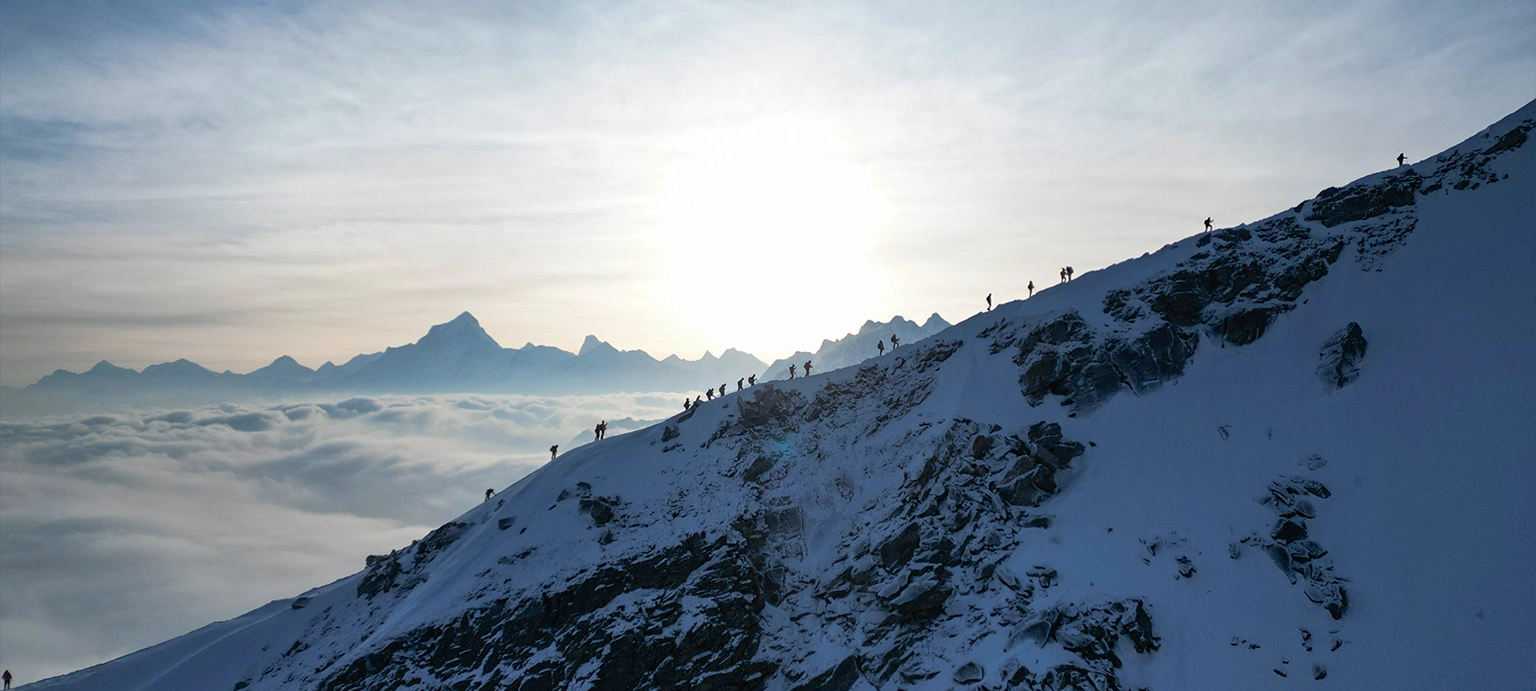
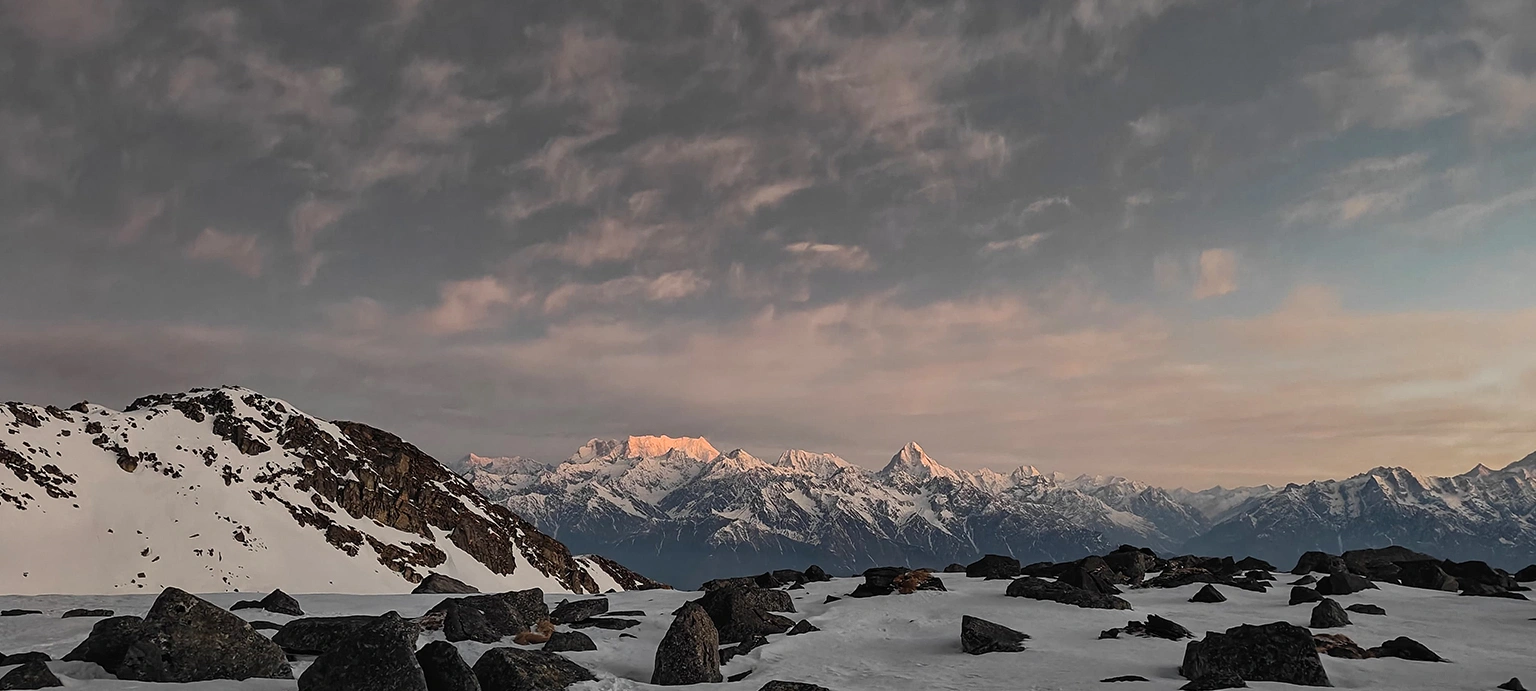
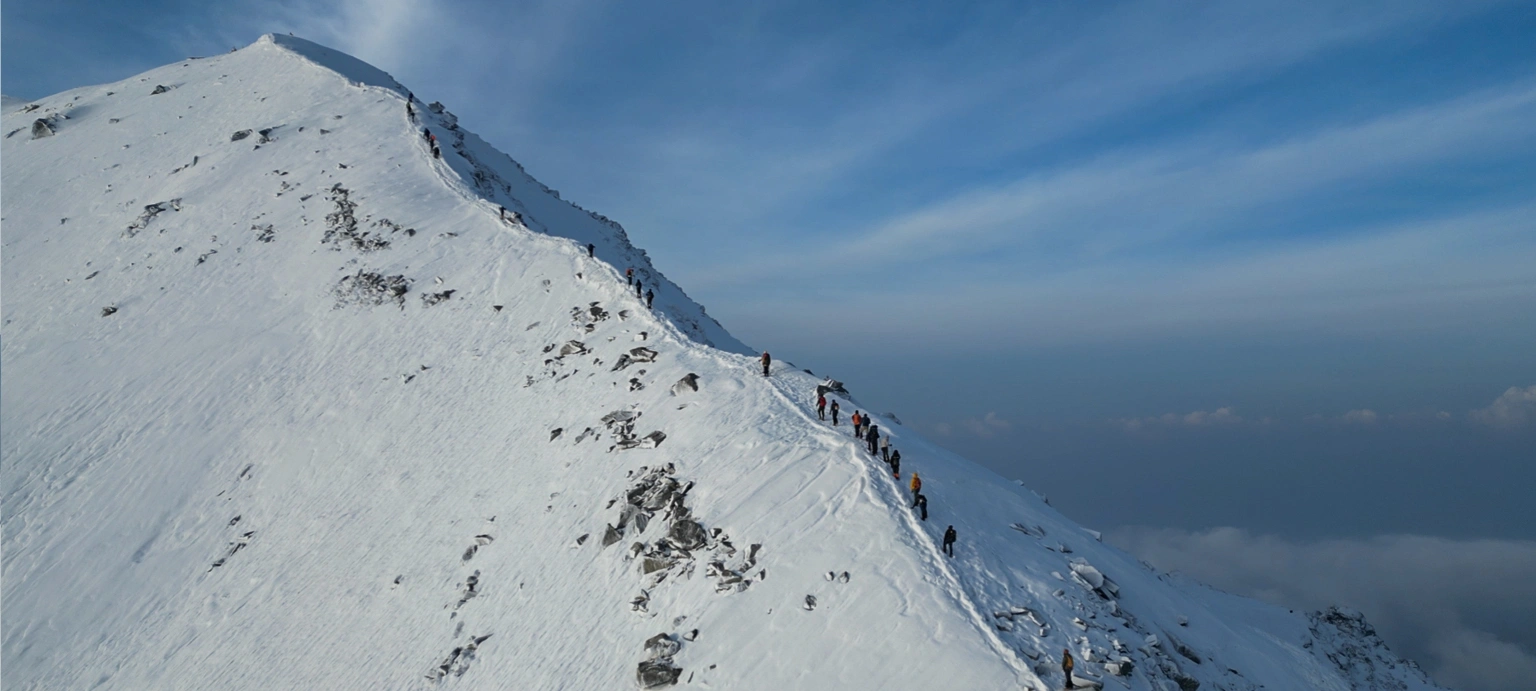
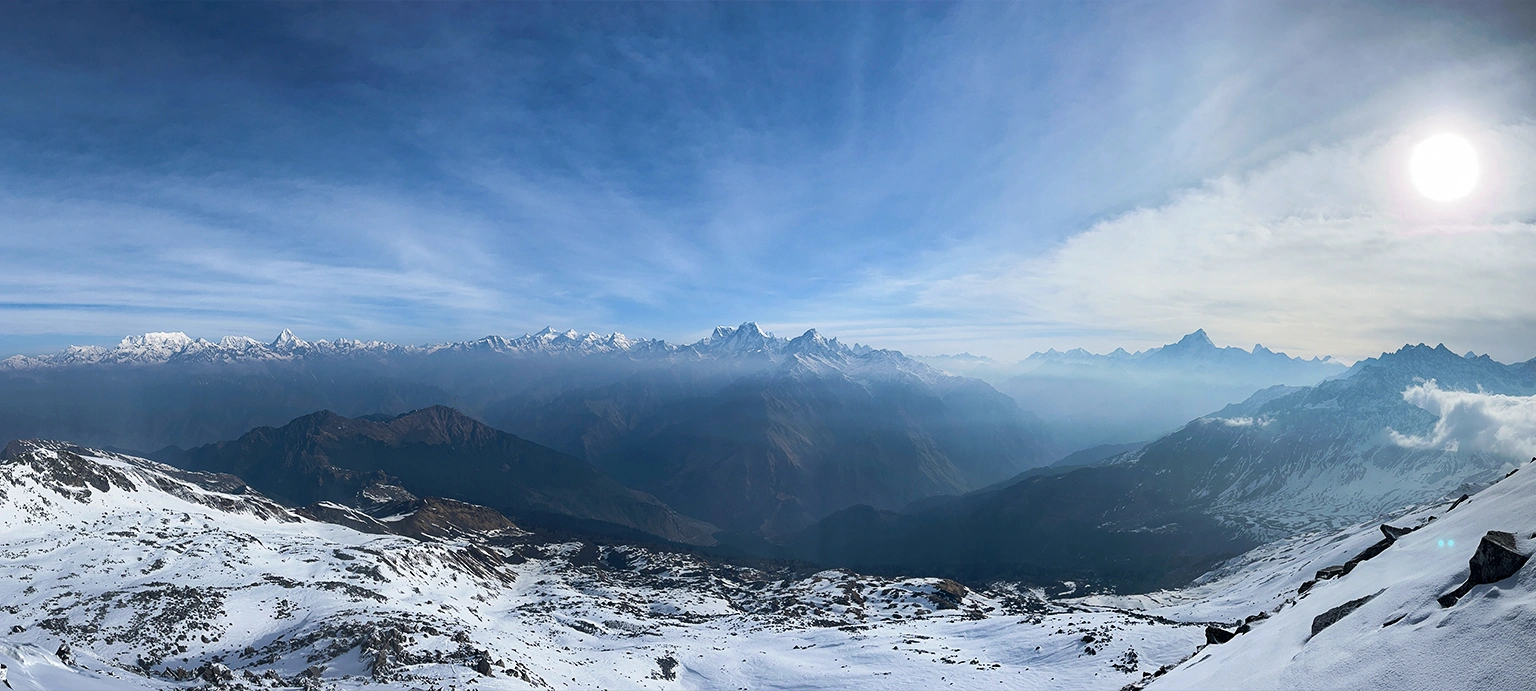
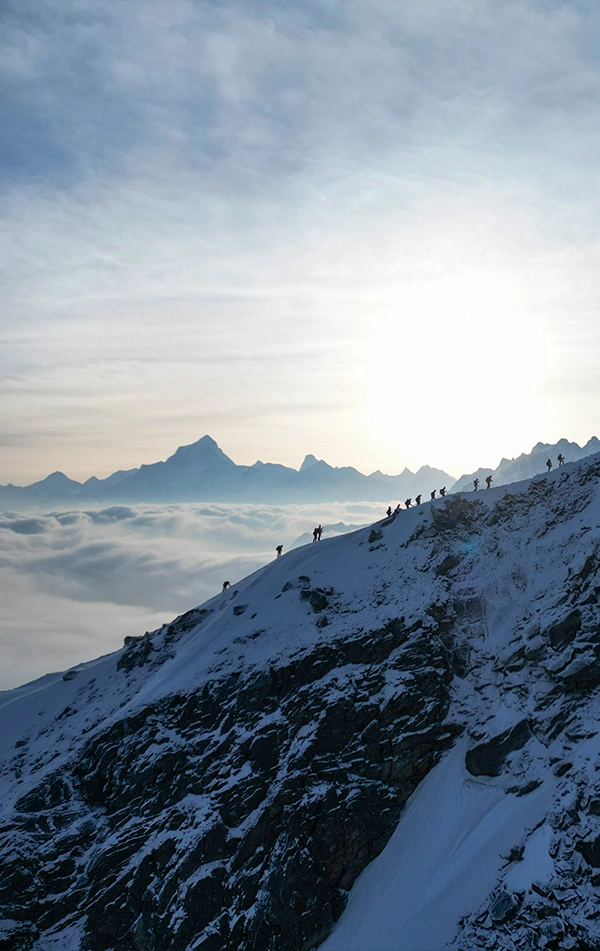
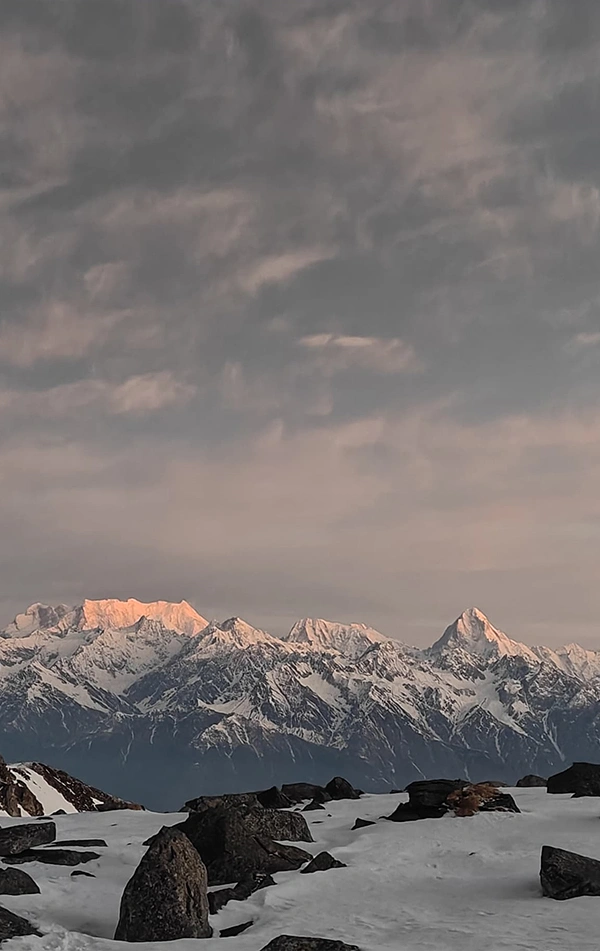
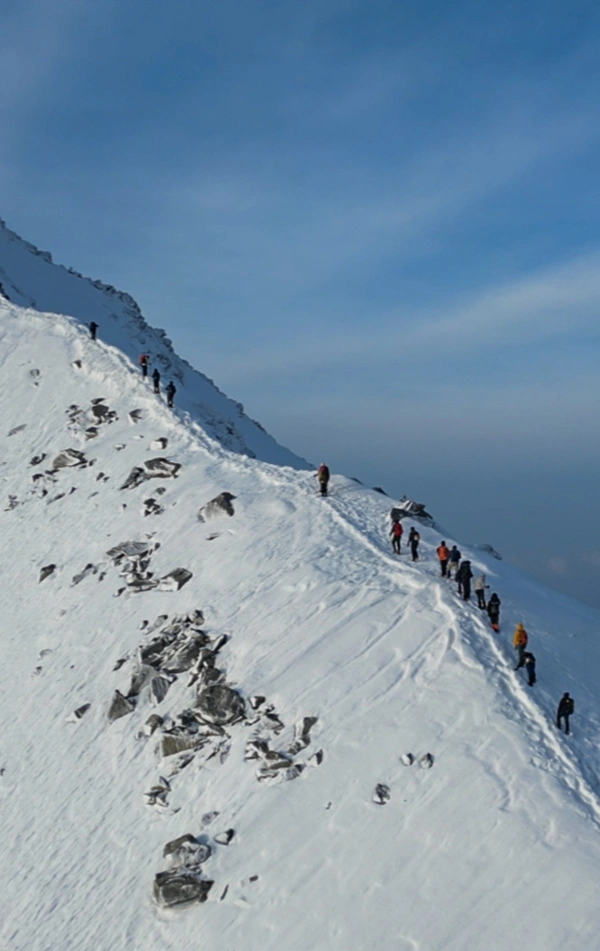
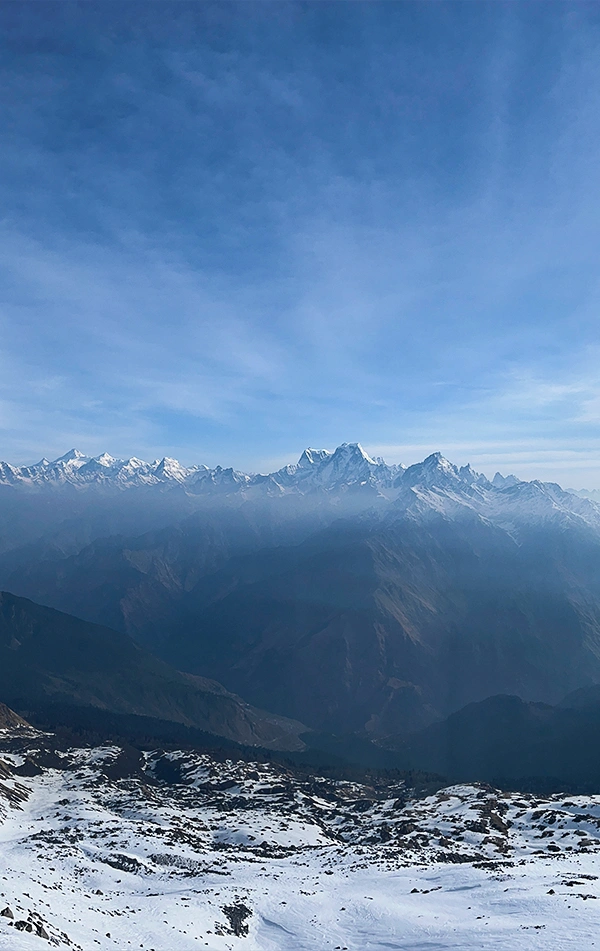

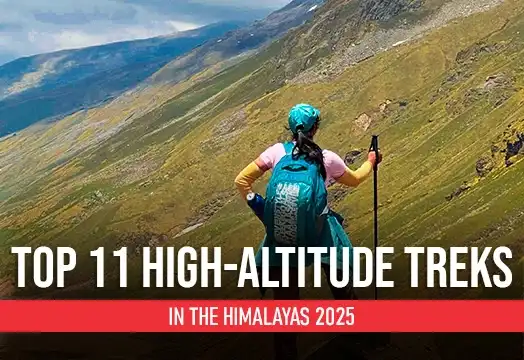
.webp)


